

Introduction to Logic and Critical Thinking
(10 reviews)
Matthew Van Cleave, Lansing Community College
Copyright Year: 2016
Publisher: Matthew J. Van Cleave
Language: English
Formats Available
Conditions of use.
Learn more about reviews.
Reviewed by "yusef" Alexander Hayes, Professor, North Shore Community College on 6/9/21
Formal and informal reasoning, argument structure, and fallacies are covered comprehensively, meeting the author's goal of both depth and succinctness. read more
Comprehensiveness rating: 5 see less
Formal and informal reasoning, argument structure, and fallacies are covered comprehensively, meeting the author's goal of both depth and succinctness.
Content Accuracy rating: 5
The book is accurate.
Relevance/Longevity rating: 5
While many modern examples are used, and they are helpful, they are not necessarily needed. The usefulness of logical principles and skills have proved themselves, and this text presents them clearly with many examples.
Clarity rating: 5
It is obvious that the author cares about their subject, audience, and students. The text is comprehensible and interesting.
Consistency rating: 5
The format is easy to understand and is consistent in framing.
Modularity rating: 5
This text would be easy to adapt.
Organization/Structure/Flow rating: 5
The organization is excellent, my one suggestion would be a concluding chapter.
Interface rating: 5
I accessed the PDF version and it would be easy to work with.
Grammatical Errors rating: 5
The writing is excellent.
Cultural Relevance rating: 5
This is not an offensive text.
Reviewed by Susan Rottmann, Part-time Lecturer, University of Southern Maine on 3/2/21
I reviewed this book for a course titled "Creative and Critical Inquiry into Modern Life." It won't meet all my needs for that course, but I haven't yet found a book that would. I wanted to review this one because it states in the preface that it... read more
Comprehensiveness rating: 4 see less
I reviewed this book for a course titled "Creative and Critical Inquiry into Modern Life." It won't meet all my needs for that course, but I haven't yet found a book that would. I wanted to review this one because it states in the preface that it fits better for a general critical thinking course than for a true logic course. I'm not sure that I'd agree. I have been using Browne and Keeley's "Asking the Right Questions: A Guide to Critical Thinking," and I think that book is a better introduction to critical thinking for non-philosophy majors. However, the latter is not open source so I will figure out how to get by without it in the future. Overall, the book seems comprehensive if the subject is logic. The index is on the short-side, but fine. However, one issue for me is that there are no page numbers on the table of contents, which is pretty annoying if you want to locate particular sections.
Content Accuracy rating: 4
I didn't find any errors. In general the book uses great examples. However, they are very much based in the American context, not for an international student audience. Some effort to broaden the chosen examples would make the book more widely applicable.
Relevance/Longevity rating: 4
I think the book will remain relevant because of the nature of the material that it addresses, however there will be a need to modify the examples in future editions and as the social and political context changes.
Clarity rating: 3
The text is lucid, but I think it would be difficult for introductory-level students who are not philosophy majors. For example, in Browne and Keeley's "Asking the Right Questions: A Guide to Critical Thinking," the sub-headings are very accessible, such as "Experts cannot rescue us, despite what they say" or "wishful thinking: perhaps the biggest single speed bump on the road to critical thinking." By contrast, Van Cleave's "Introduction to Logic and Critical Thinking" has more subheadings like this: "Using your own paraphrases of premises and conclusions to reconstruct arguments in standard form" or "Propositional logic and the four basic truth functional connectives." If students are prepared very well for the subject, it would work fine, but for students who are newly being introduced to critical thinking, it is rather technical.
It seems to be very consistent in terms of its terminology and framework.
Modularity rating: 4
The book is divided into 4 chapters, each having many sub-chapters. In that sense, it is readily divisible and modular. However, as noted above, there are no page numbers on the table of contents, which would make assigning certain parts rather frustrating. Also, I'm not sure why the book is only four chapter and has so many subheadings (for instance 17 in Chapter 2) and a length of 242 pages. Wouldn't it make more sense to break up the book into shorter chapters? I think this would make it easier to read and to assign in specific blocks to students.
Organization/Structure/Flow rating: 4
The organization of the book is fine overall, although I think adding page numbers to the table of contents and breaking it up into more separate chapters would help it to be more easily navigable.
Interface rating: 4
The book is very simply presented. In my opinion it is actually too simple. There are few boxes or diagrams that highlight and explain important points.
The text seems fine grammatically. I didn't notice any errors.
The book is written with an American audience in mind, but I did not notice culturally insensitive or offensive parts.
Overall, this book is not for my course, but I think it could work well in a philosophy course.
Reviewed by Daniel Lee, Assistant Professor of Economics and Leadership, Sweet Briar College on 11/11/19
This textbook is not particularly comprehensive (4 chapters long), but I view that as a benefit. In fact, I recommend it for use outside of traditional logic classes, but rather interdisciplinary classes that evaluate argument read more
Comprehensiveness rating: 3 see less
This textbook is not particularly comprehensive (4 chapters long), but I view that as a benefit. In fact, I recommend it for use outside of traditional logic classes, but rather interdisciplinary classes that evaluate argument
To the best of my ability, I regard this content as accurate, error-free, and unbiased
The book is broadly relevant and up-to-date, with a few stray temporal references (sydney olympics, particular presidencies). I don't view these time-dated examples as problematic as the logical underpinnings are still there and easily assessed
Clarity rating: 4
My only pushback on clarity is I didn't find the distinction between argument and explanation particularly helpful/useful/easy to follow. However, this experience may have been unique to my class.
To the best of my ability, I regard this content as internally consistent
I found this text quite modular, and was easily able to integrate other texts into my lessons and disregard certain chapters or sub-sections
The book had a logical and consistent structure, but to the extent that there are only 4 chapters, there isn't much scope for alternative approaches here
No problems with the book's interface
The text is grammatically sound
Cultural Relevance rating: 4
Perhaps the text could have been more universal in its approach. While I didn't find the book insensitive per-se, logic can be tricky here because the point is to evaluate meaningful (non-trivial) arguments, but any argument with that sense of gravity can also be traumatic to students (abortion, death penalty, etc)
No additional comments
Reviewed by Lisa N. Thomas-Smith, Graduate Part-time Instructor, CU Boulder on 7/1/19
The text covers all the relevant technical aspects of introductory logic and critical thinking, and covers them well. A separate glossary would be quite helpful to students. However, the terms are clearly and thoroughly explained within the text,... read more
The text covers all the relevant technical aspects of introductory logic and critical thinking, and covers them well. A separate glossary would be quite helpful to students. However, the terms are clearly and thoroughly explained within the text, and the index is very thorough.
The content is excellent. The text is thorough and accurate with no errors that I could discern. The terminology and exercises cover the material nicely and without bias.
The text should easily stand the test of time. The exercises are excellent and would be very helpful for students to internalize correct critical thinking practices. Because of the logical arrangement of the text and the many sub-sections, additional material should be very easy to add.
The text is extremely clearly and simply written. I anticipate that a diligent student could learn all of the material in the text with little additional instruction. The examples are relevant and easy to follow.
The text did not confuse terms or use inconsistent terminology, which is very important in a logic text. The discipline often uses multiple terms for the same concept, but this text avoids that trap nicely.
The text is fairly easily divisible. Since there are only four chapters, those chapters include large blocks of information. However, the chapters themselves are very well delineated and could be easily broken up so that parts could be left out or covered in a different order from the text.
The flow of the text is excellent. All of the information is handled solidly in an order that allows the student to build on the information previously covered.
The PDF Table of Contents does not include links or page numbers which would be very helpful for navigation. Other than that, the text was very easy to navigate. All the images, charts, and graphs were very clear
I found no grammatical errors in the text.
Cultural Relevance rating: 3
The text including examples and exercises did not seem to be offensive or insensitive in any specific way. However, the examples included references to black and white people, but few others. Also, the text is very American specific with many examples from and for an American audience. More diversity, especially in the examples, would be appropriate and appreciated.
Reviewed by Leslie Aarons, Associate Professor of Philosophy, CUNY LaGuardia Community College on 5/16/19
This is an excellent introductory (first-year) Logic and Critical Thinking textbook. The book covers the important elementary information, clearly discussing such things as the purpose and basic structure of an argument; the difference between an... read more
This is an excellent introductory (first-year) Logic and Critical Thinking textbook. The book covers the important elementary information, clearly discussing such things as the purpose and basic structure of an argument; the difference between an argument and an explanation; validity; soundness; and the distinctions between an inductive and a deductive argument in accessible terms in the first chapter. It also does a good job introducing and discussing informal fallacies (Chapter 4). The incorporation of opportunities to evaluate real-world arguments is also very effective. Chapter 2 also covers a number of formal methods of evaluating arguments, such as Venn Diagrams and Propositional logic and the four basic truth functional connectives, but to my mind, it is much more thorough in its treatment of Informal Logic and Critical Thinking skills, than it is of formal logic. I also appreciated that Van Cleave’s book includes exercises with answers and an index, but there is no glossary; which I personally do not find detracts from the book's comprehensiveness.
Overall, Van Cleave's book is error-free and unbiased. The language used is accessible and engaging. There were no glaring inaccuracies that I was able to detect.
Van Cleave's Textbook uses relevant, contemporary content that will stand the test of time, at least for the next few years. Although some examples use certain subjects like former President Obama, it does so in a useful manner that inspires the use of critical thinking skills. There are an abundance of examples that inspire students to look at issues from many different political viewpoints, challenging students to practice evaluating arguments, and identifying fallacies. Many of these exercises encourage students to critique issues, and recognize their own inherent reader-biases and challenge their own beliefs--hallmarks of critical thinking.
As mentioned previously, the author has an accessible style that makes the content relatively easy to read and engaging. He also does a suitable job explaining jargon/technical language that is introduced in the textbook.
Van Cleave uses terminology consistently and the chapters flow well. The textbook orients the reader by offering effective introductions to new material, step-by-step explanations of the material, as well as offering clear summaries of each lesson.
This textbook's modularity is really quite good. Its language and structure are not overly convoluted or too-lengthy, making it convenient for individual instructors to adapt the materials to suit their methodological preferences.
The topics in the textbook are presented in a logical and clear fashion. The structure of the chapters are such that it is not necessary to have to follow the chapters in their sequential order, and coverage of material can be adapted to individual instructor's preferences.
The textbook is free of any problematic interface issues. Topics, sections and specific content are accessible and easy to navigate. Overall it is user-friendly.
I did not find any significant grammatical issues with the textbook.
The textbook is not culturally insensitive, making use of a diversity of inclusive examples. Materials are especially effective for first-year critical thinking/logic students.
I intend to adopt Van Cleave's textbook for a Critical Thinking class I am teaching at the Community College level. I believe that it will help me facilitate student-learning, and will be a good resource to build additional classroom activities from the materials it provides.
Reviewed by Jennie Harrop, Chair, Department of Professional Studies, George Fox University on 3/27/18
While the book is admirably comprehensive, its extensive details within a few short chapters may feel overwhelming to students. The author tackles an impressive breadth of concepts in Chapter 1, 2, 3, and 4, which leads to 50-plus-page chapters... read more
While the book is admirably comprehensive, its extensive details within a few short chapters may feel overwhelming to students. The author tackles an impressive breadth of concepts in Chapter 1, 2, 3, and 4, which leads to 50-plus-page chapters that are dense with statistical analyses and critical vocabulary. These topics are likely better broached in manageable snippets rather than hefty single chapters.
The ideas addressed in Introduction to Logic and Critical Thinking are accurate but at times notably political. While politics are effectively used to exemplify key concepts, some students may be distracted by distinct political leanings.
The terms and definitions included are relevant, but the examples are specific to the current political, cultural, and social climates, which could make the materials seem dated in a few years without intentional and consistent updates.
While the reasoning is accurate, the author tends to complicate rather than simplify -- perhaps in an effort to cover a spectrum of related concepts. Beginning readers are likely to be overwhelmed and under-encouraged by his approach.
Consistency rating: 3
The four chapters are somewhat consistent in their play of definition, explanation, and example, but the structure of each chapter varies according to the concepts covered. In the third chapter, for example, key ideas are divided into sub-topics numbering from 3.1 to 3.10. In the fourth chapter, the sub-divisions are further divided into sub-sections numbered 4.1.1-4.1.5, 4.2.1-4.2.2, and 4.3.1 to 4.3.6. Readers who are working quickly to master new concepts may find themselves mired in similarly numbered subheadings, longing for a grounded concepts on which to hinge other key principles.
Modularity rating: 3
The book's four chapters make it mostly self-referential. The author would do well to beak this text down into additional subsections, easing readers' accessibility.
The content of the book flows logically and well, but the information needs to be better sub-divided within each larger chapter, easing the student experience.
The book's interface is effective, allowing readers to move from one section to the next with a single click. Additional sub-sections would ease this interplay even further.
Grammatical Errors rating: 4
Some minor errors throughout.
For the most part, the book is culturally neutral, avoiding direct cultural references in an effort to remain relevant.
Reviewed by Yoichi Ishida, Assistant Professor of Philosophy, Ohio University on 2/1/18
This textbook covers enough topics for a first-year course on logic and critical thinking. Chapter 1 covers the basics as in any standard textbook in this area. Chapter 2 covers propositional logic and categorical logic. In propositional logic,... read more
This textbook covers enough topics for a first-year course on logic and critical thinking. Chapter 1 covers the basics as in any standard textbook in this area. Chapter 2 covers propositional logic and categorical logic. In propositional logic, this textbook does not cover suppositional arguments, such as conditional proof and reductio ad absurdum. But other standard argument forms are covered. Chapter 3 covers inductive logic, and here this textbook introduces probability and its relationship with cognitive biases, which are rarely discussed in other textbooks. Chapter 4 introduces common informal fallacies. The answers to all the exercises are given at the end. However, the last set of exercises is in Chapter 3, Section 5. There are no exercises in the rest of the chapter. Chapter 4 has no exercises either. There is index, but no glossary.
The textbook is accurate.
The content of this textbook will not become obsolete soon.
The textbook is written clearly.
The textbook is internally consistent.
The textbook is fairly modular. For example, Chapter 3, together with a few sections from Chapter 1, can be used as a short introduction to inductive logic.
The textbook is well-organized.
There are no interface issues.
I did not find any grammatical errors.
This textbook is relevant to a first semester logic or critical thinking course.
Reviewed by Payal Doctor, Associate Professro, LaGuardia Community College on 2/1/18
This text is a beginner textbook for arguments and propositional logic. It covers the basics of identifying arguments, building arguments, and using basic logic to construct propositions and arguments. It is quite comprehensive for a beginner... read more
This text is a beginner textbook for arguments and propositional logic. It covers the basics of identifying arguments, building arguments, and using basic logic to construct propositions and arguments. It is quite comprehensive for a beginner book, but seems to be a good text for a course that needs a foundation for arguments. There are exercises on creating truth tables and proofs, so it could work as a logic primer in short sessions or with the addition of other course content.
The books is accurate in the information it presents. It does not contain errors and is unbiased. It covers the essential vocabulary clearly and givens ample examples and exercises to ensure the student understands the concepts
The content of the book is up to date and can be easily updated. Some examples are very current for analyzing the argument structure in a speech, but for this sort of text understandable examples are important and the author uses good examples.
The book is clear and easy to read. In particular, this is a good text for community college students who often have difficulty with reading comprehension. The language is straightforward and concepts are well explained.
The book is consistent in terminology, formatting, and examples. It flows well from one topic to the next, but it is also possible to jump around the text without loosing the voice of the text.
The books is broken down into sub units that make it easy to assign short blocks of content at a time. Later in the text, it does refer to a few concepts that appear early in that text, but these are all basic concepts that must be used to create a clear and understandable text. No sections are too long and each section stays on topic and relates the topic to those that have come before when necessary.
The flow of the text is logical and clear. It begins with the basic building blocks of arguments, and practice identifying more and more complex arguments is offered. Each chapter builds up from the previous chapter in introducing propositional logic, truth tables, and logical arguments. A select number of fallacies are presented at the end of the text, but these are related to topics that were presented before, so it makes sense to have these last.
The text is free if interface issues. I used the PDF and it worked fine on various devices without loosing formatting.
1. The book contains no grammatical errors.
The text is culturally sensitive, but examples used are a bit odd and may be objectionable to some students. For instance, President Obama's speech on Syria is used to evaluate an extended argument. This is an excellent example and it is explained well, but some who disagree with Obama's policies may have trouble moving beyond their own politics. However, other examples look at issues from all political viewpoints and ask students to evaluate the argument, fallacy, etc. and work towards looking past their own beliefs. Overall this book does use a variety of examples that most students can understand and evaluate.
My favorite part of this book is that it seems to be written for community college students. My students have trouble understanding readings in the New York Times, so it is nice to see a logic and critical thinking text use real language that students can understand and follow without the constant need of a dictionary.
Reviewed by Rebecca Owen, Adjunct Professor, Writing, Chemeketa Community College on 6/20/17
This textbook is quite thorough--there are conversational explanations of argument structure and logic. I think students will be happy with the conversational style this author employs. Also, there are many examples and exercises using current... read more
This textbook is quite thorough--there are conversational explanations of argument structure and logic. I think students will be happy with the conversational style this author employs. Also, there are many examples and exercises using current events, funny scenarios, or other interesting ways to evaluate argument structure and validity. The third section, which deals with logical fallacies, is very clear and comprehensive. My only critique of the material included in the book is that the middle section may be a bit dense and math-oriented for learners who appreciate the more informal, informative style of the first and third section. Also, the book ends rather abruptly--it moves from a description of a logical fallacy to the answers for the exercises earlier in the text.
The content is very reader-friendly, and the author writes with authority and clarity throughout the text. There are a few surface-level typos (Starbuck's instead of Starbucks, etc.). None of these small errors detract from the quality of the content, though.
One thing I really liked about this text was the author's wide variety of examples. To demonstrate different facets of logic, he used examples from current media, movies, literature, and many other concepts that students would recognize from their daily lives. The exercises in this text also included these types of pop-culture references, and I think students will enjoy the familiarity--as well as being able to see the logical structures behind these types of references. I don't think the text will need to be updated to reflect new instances and occurrences; the author did a fine job at picking examples that are relatively timeless. As far as the subject matter itself, I don't think it will become obsolete any time soon.
The author writes in a very conversational, easy-to-read manner. The examples used are quite helpful. The third section on logical fallacies is quite easy to read, follow, and understand. A student in an argument writing class could benefit from this section of the book. The middle section is less clear, though. A student learning about the basics of logic might have a hard time digesting all of the information contained in chapter two. This material might be better in two separate chapters. I think the author loses the balance of a conversational, helpful tone and focuses too heavily on equations.
Consistency rating: 4
Terminology in this book is quite consistent--the key words are highlighted in bold. Chapters 1 and 3 follow a similar organizational pattern, but chapter 2 is where the material becomes more dense and equation-heavy. I also would have liked a closing passage--something to indicate to the reader that we've reached the end of the chapter as well as the book.
I liked the overall structure of this book. If I'm teaching an argumentative writing class, I could easily point the students to the chapters where they can identify and practice identifying fallacies, for instance. The opening chapter is clear in defining the necessary terms, and it gives the students an understanding of the toolbox available to them in assessing and evaluating arguments. Even though I found the middle section to be dense, smaller portions could be assigned.
The author does a fine job connecting each defined term to the next. He provides examples of how each defined term works in a sentence or in an argument, and then he provides practice activities for students to try. The answers for each question are listed in the final pages of the book. The middle section feels like the heaviest part of the whole book--it would take the longest time for a student to digest if assigned the whole chapter. Even though this middle section is a bit heavy, it does fit the overall structure and flow of the book. New material builds on previous chapters and sub-chapters. It ends abruptly--I didn't realize that it had ended, and all of a sudden I found myself in the answer section for those earlier exercises.
The simple layout is quite helpful! There is nothing distracting, image-wise, in this text. The table of contents is clearly arranged, and each topic is easy to find.
Tiny edits could be made (Starbuck's/Starbucks, for one). Otherwise, it is free of distracting grammatical errors.
This text is quite culturally relevant. For instance, there is one example that mentions the rumors of Barack Obama's birthplace as somewhere other than the United States. This example is used to explain how to analyze an argument for validity. The more "sensational" examples (like the Obama one above) are helpful in showing argument structure, and they can also help students see how rumors like this might gain traction--as well as help to show students how to debunk them with their newfound understanding of argument and logic.
The writing style is excellent for the subject matter, especially in the third section explaining logical fallacies. Thank you for the opportunity to read and review this text!
Reviewed by Laurel Panser, Instructor, Riverland Community College on 6/20/17
This is a review of Introduction to Logic and Critical Thinking, an open source book version 1.4 by Matthew Van Cleave. The comparison book used was Patrick J. Hurley’s A Concise Introduction to Logic 12th Edition published by Cengage as well as... read more
This is a review of Introduction to Logic and Critical Thinking, an open source book version 1.4 by Matthew Van Cleave. The comparison book used was Patrick J. Hurley’s A Concise Introduction to Logic 12th Edition published by Cengage as well as the 13th edition with the same title. Lori Watson is the second author on the 13th edition.
Competing with Hurley is difficult with respect to comprehensiveness. For example, Van Cleave’s book is comprehensive to the extent that it probably covers at least two-thirds or more of what is dealt with in most introductory, one-semester logic courses. Van Cleave’s chapter 1 provides an overview of argumentation including discerning non-arguments from arguments, premises versus conclusions, deductive from inductive arguments, validity, soundness and more. Much of Van Cleave’s chapter 1 parallel’s Hurley’s chapter 1. Hurley’s chapter 3 regarding informal fallacies is comprehensive while Van Cleave’s chapter 4 on this topic is less extensive. Categorical propositions are a topic in Van Cleave’s chapter 2; Hurley’s chapters 4 and 5 provide more instruction on this, however. Propositional logic is another topic in Van Cleave’s chapter 2; Hurley’s chapters 6 and 7 provide more information on this, though. Van Cleave did discuss messy issues of language meaning briefly in his chapter 1; that is the topic of Hurley’s chapter 2.
Van Cleave’s book includes exercises with answers and an index. A glossary was not included.
Reviews of open source textbooks typically include criteria besides comprehensiveness. These include comments on accuracy of the information, whether the book will become obsolete soon, jargon-free clarity to the extent that is possible, organization, navigation ease, freedom from grammar errors and cultural relevance; Van Cleave’s book is fine in all of these areas. Further criteria for open source books includes modularity and consistency of terminology. Modularity is defined as including blocks of learning material that are easy to assign to students. Hurley’s book has a greater degree of modularity than Van Cleave’s textbook. The prose Van Cleave used is consistent.
Van Cleave’s book will not become obsolete soon.
Van Cleave’s book has accessible prose.
Van Cleave used terminology consistently.
Van Cleave’s book has a reasonable degree of modularity.
Van Cleave’s book is organized. The structure and flow of his book is fine.
Problems with navigation are not present.
Grammar problems were not present.
Van Cleave’s book is culturally relevant.
Van Cleave’s book is appropriate for some first semester logic courses.
Table of Contents
Chapter 1: Reconstructing and analyzing arguments
- 1.1 What is an argument?
- 1.2 Identifying arguments
- 1.3 Arguments vs. explanations
- 1.4 More complex argument structures
- 1.5 Using your own paraphrases of premises and conclusions to reconstruct arguments in standard form
- 1.6 Validity
- 1.7 Soundness
- 1.8 Deductive vs. inductive arguments
- 1.9 Arguments with missing premises
- 1.10 Assuring, guarding, and discounting
- 1.11 Evaluative language
- 1.12 Evaluating a real-life argument
Chapter 2: Formal methods of evaluating arguments
- 2.1 What is a formal method of evaluation and why do we need them?
- 2.2 Propositional logic and the four basic truth functional connectives
- 2.3 Negation and disjunction
- 2.4 Using parentheses to translate complex sentences
- 2.5 “Not both” and “neither nor”
- 2.6 The truth table test of validity
- 2.7 Conditionals
- 2.8 “Unless”
- 2.9 Material equivalence
- 2.10 Tautologies, contradictions, and contingent statements
- 2.11 Proofs and the 8 valid forms of inference
- 2.12 How to construct proofs
- 2.13 Short review of propositional logic
- 2.14 Categorical logic
- 2.15 The Venn test of validity for immediate categorical inferences
- 2.16 Universal statements and existential commitment
- 2.17 Venn validity for categorical syllogisms
Chapter 3: Evaluating inductive arguments and probabilistic and statistical fallacies
- 3.1 Inductive arguments and statistical generalizations
- 3.2 Inference to the best explanation and the seven explanatory virtues
- 3.3 Analogical arguments
- 3.4 Causal arguments
- 3.5 Probability
- 3.6 The conjunction fallacy
- 3.7 The base rate fallacy
- 3.8 The small numbers fallacy
- 3.9 Regression to the mean fallacy
- 3.10 Gambler's fallacy
Chapter 4: Informal fallacies
- 4.1 Formal vs. informal fallacies
- 4.1.1 Composition fallacy
- 4.1.2 Division fallacy
- 4.1.3 Begging the question fallacy
- 4.1.4 False dichotomy
- 4.1.5 Equivocation
- 4.2 Slippery slope fallacies
- 4.2.1 Conceptual slippery slope
- 4.2.2 Causal slippery slope
- 4.3 Fallacies of relevance
- 4.3.1 Ad hominem
- 4.3.2 Straw man
- 4.3.3 Tu quoque
- 4.3.4 Genetic
- 4.3.5 Appeal to consequences
- 4.3.6 Appeal to authority
Answers to exercises Glossary/Index
Ancillary Material
About the book.
This is an introductory textbook in logic and critical thinking. The goal of the textbook is to provide the reader with a set of tools and skills that will enable them to identify and evaluate arguments. The book is intended for an introductory course that covers both formal and informal logic. As such, it is not a formal logic textbook, but is closer to what one would find marketed as a “critical thinking textbook.”
About the Contributors
Matthew Van Cleave , PhD, Philosophy, University of Cincinnati, 2007. VAP at Concordia College (Moorhead), 2008-2012. Assistant Professor at Lansing Community College, 2012-2016. Professor at Lansing Community College, 2016-
Contribute to this Page

17 Best Books On Logic And Critical Thinking
Disclaimer: This post contains affiliate links. If you click and buy, we may make a commission at no additional charge to you. Please see our affiliate disclosure for more details.
“The ability to think critically and logically is an essential skill everyone should possess. It allows us to evaluate information and arguments objectively, make informed decisions, and communicate effectively. With so much information at our fingertips, it can be challenging to determine what is credible and relevant. That’s why it’s crucial to have a solid foundation in logic and critical thinking.
In this blog post, we’ll introduce you to 17 of the best books on logic and critical thinking that will help you develop your reasoning skills, think more deeply, and approach problems with clarity and precision. Whether you’re a student, professional, or lifelong learner, these books offer practical advice, thought-provoking exercises, and real-world examples to help you master the art of critical thinking.”
Table of Contents
Best Books On Logic And Critical Thinking
1. thinking, fast and slow by daniel kahneman.
“Thinking, Fast and Slow” by Daniel Kahneman is a book that explores the workings of the human mind and how it influences our decision-making and behavior. It provides insights into how our minds make automatic, intuitive judgments and decisions and how these can sometimes lead to errors in thinking. The book is based on decades of research in the field of psychology and behavioral economics, and is written in a clear and accessible style.
Here are the key points from the book:
- Dual Process Theory : The book introduces the idea of two systems of thinking – System 1 and System 2. System 1 is fast, automatic, and intuitive, while System 2 is slow, deliberate, and effortful. Kahneman argues that our decisions and actions are often driven by System 1 thinking, which can lead to biases and errors.
- Heuristics and Biases : Heuristics are mental shortcuts that we use to make quick judgments and decisions. These can be useful in many situations but can also lead to biases and errors in thinking. The book discusses various heuristics, such as the availability heuristic (judging the probability of an event based on how easily examples come to mind), the anchoring effect (the tendency to rely too heavily on the first piece of information encountered), and the framing effect (the way that different ways of presenting information can influence our decisions).
- Overconfidence : Kahneman argues that we are often overconfident in our judgments and predictions and that this can lead to poor decisions. He provides examples from various fields, such as medicine and finance, to show how overconfidence can lead to errors.
- The Role of Emotions : The book explores the role that emotions play in our decision-making. Kahneman argues that emotions can influence our thinking and that we are often not aware of this influence.
- The Limits of Rationality : The book challenges the idea that people are always rational and that decisions are always based on careful analysis. Instead, Kahneman argues that people often make decisions based on intuition and emotions and that these decisions are not always rational.
- The Role of Experiences : The book highlights the importance of experiences in shaping our thinking and behavior. Kahneman argues that our experiences can influence our beliefs and attitudes and that we often rely on these experiences to make decisions.
- The Importance of Awareness : The book emphasizes the importance of awareness in avoiding biases and errors in thinking. Kahneman argues that by being aware of our biases and heuristics, we can reduce their influence and make better decisions.
In conclusion, “Thinking, Fast and Slow” is a fascinating book that provides insights into the workings of the human mind and how it influences our behavior.
2. Predictably Irrational: The Hidden Forces That Shape Our Decisions by Dan Ariely
“Predictably Irrational: The Hidden Forces That Shape Our Decisions” by Dan Ariely is a book that explores the ways in which our decisions are influenced by factors other than rational thinking. The book is based on the author’s extensive research in the field of behavioral economics, and it challenges the traditional economic view of humans as rational decision-makers.
- Irrationality : The book argues that humans are not always rational in their decision-making, and that there are many factors that can influence our choices. Ariely explores these factors and provides examples of how they can lead to predictable irrationality in our behavior.
- Anchoring : The author discusses the concept of anchoring, which refers to the way that our first exposure to a piece of information can influence our subsequent thinking and decision-making. Ariely provides examples of how anchoring can lead to predictable irrationality in our behavior, such as the way that people are willing to pay more for a product if they are first shown a higher price.
- Context : The book highlights the importance of context in shaping our behavior and influencing our decisions. Ariely argues that our choices are often influenced by the context in which they are made, and that this can lead to predictable irrationality.
- Social Norms : The author explores the role of social norms in shaping our behavior and decisions. Ariely argues that social norms can influence our behavior in ways that are not always rational, and that we often make decisions based on what is socially acceptable rather than what is in our best interest.
- The Influence of Emotions : Ariely argues that emotions play a key role in shaping our decisions and that we are often not aware of the influence that emotions have on our behavior. He provides examples of how emotions can lead to predictable irrationality, such as the way that people are more likely to make decisions based on their feelings rather than on rational considerations.
- The Power of Free : The author explores the concept of “free,” and how it can influence our behavior and decisions. Ariely argues that people often place a higher value on things that are free, and that this can lead to predictable irrationality in our behavior.
- The Influence of Scarcity : Ariely discusses the role of scarcity in shaping our behavior and decisions, and how the availability of a limited resource can lead to predictable irrationality. He provides examples of how scarcity can influence our behavior, such as the way that people are willing to pay more for a product when it is in short supply.
In conclusion, “Predictably Irrational: The Hidden Forces That Shape Our Decisions” is a thought-provoking book that challenges traditional views of human rationality and provides insights into the many factors that can influence our behavior and decisions. The book is written in a clear and accessible style, and is recommended for anyone interested in psychology, economics, and the science of decision-making. It’s one of the best critical thinking books that you should check out.
3. The Art of Thinking Clearly by Rolf Dobelli
“The Art of Thinking Clearly” by Rolf Dobelli is a book that explores the ways in which our thinking can be biased, and provides practical tips for improving our decision-making and critical thinking skills. The book covers a wide range of topics, including cognitive biases, logical fallacies, and other common pitfalls that can lead to poor decision-making.
Here are some key points from the book:
- Cognitive Biases : The book discusses a variety of cognitive biases, including confirmation bias, sunk cost fallacy, and availability bias. Dobelli explains how these biases can influence our thinking and decision-making and provides examples of how they can lead to poor decisions.
- Logical Fallacies : The author covers a range of logical fallacies, including ad hominem arguments, false dichotomies, and slippery slopes. He explains how these fallacies can be used to mislead and how to recognize them to improve your critical thinking skills.
- The Importance of Probabilities : Dobelli emphasizes the importance of understanding probabilities and how they can influence our thinking and decision-making. He provides tips for improving our understanding of probabilities, such as avoiding overconfidence and avoiding the false belief that a low-probability event is unlikely to happen.
- The Power of Framing : The book explores the role of framing in shaping our perceptions and decisions and how different ways of presenting information can lead to very different decisions. Dobelli provides examples of how framing can influence our thinking, such as the way that people are more likely to support a policy if it is framed in terms of benefits rather than costs.
- The Impact of Emotions : The author discusses the role of emotions in shaping our thinking and decision-making and how they can lead to irrational behavior. He provides tips for reducing the influence of emotions, such as using logic and reason to make decisions and avoiding emotional appeals.
- The Importance of Simplicity : Dobelli argues that simplicity is key to effective thinking and decision-making and that we should strive to keep our thinking simple and avoid over-complicating issues. He provides tips for simplifying our thinking, such as avoiding distractions, focusing on the most important information, and avoiding overly complex explanations.
- The Role of Intuition : The author discusses the role of intuition in our decision-making and how it can be both useful and misleading. He provides tips for improving our intuition, such as exposing ourselves to a variety of experiences and avoiding over-reliance on intuition.
In conclusion, “The Art of Thinking Clearly” is a practical and accessible guide to improving your critical thinking skills and decision-making abilities. The book covers a wide range of topics and provides actionable advice for avoiding common pitfalls and biases. Whether you’re a student, a professional, or just someone interested in improving your thinking skills, this book is an excellent resource for anyone who wants to be a more effective thinker.
4. Weaponized Lies How to Think Critically in the Post-Truth Era by Daniel J. Levitin
“Weaponized Lies: How to Think Critically in the Post-Truth Era” by Daniel J. Levitin is a book that explores the dangers of misinformation and propaganda, and provides practical tips for improving critical thinking and decision-making skills in the digital age.
Below are the key points from the book:
- The Rise of Misinformation : Levitin discusses the proliferation of misinformation in the digital age and how it can be used to manipulate public opinion and spread false information. He provides examples of how misinformation has been used to distort public discourse and the impact that this can have on modern society.
- The Science of Thinking : Levitin draws on the latest research in cognitive psychology and neuroscience to explain why it is so difficult to think critically in the face of misinformation. He provides an overview of the ways in which our brain processes information and how this can lead to biases and misunderstandings.
- The Power of Narratives : Levitin explains how narratives can be used to manipulate public opinion, and provides tips for identifying false narratives and breaking down complex information into more manageable pieces.
- The Importance of Evidence : The author emphasizes the importance of evidence in critical thinking and provides tips for evaluating the credibility of sources and using data to make informed decisions. He discusses the role of intuition and gut feelings in decision-making and how to distinguish between intuition that is based on solid evidence and intuition that is based on false or misleading information.
- The Role of Emotions : Levitin discusses the role of emotions in shaping our thinking and decision-making and provides tips for reducing the influence of emotions in order to think more critically. He explains how emotions can be used to manipulate public opinion and provides examples of how propaganda and misinformation can play on our emotions to spread false information.
- The Need for Digital Literacy : Levitin argues that digital literacy is essential in the post-truth era and provides tips for improving digital literacy skills, such as evaluating the credibility of sources, identifying misinformation, and using data to make informed decisions.
- The Importance of Diversity : The author emphasizes the importance of diversity in critical thinking and provides tips for seeking out a diversity of perspectives and avoiding echo chambers. He explains how diversity can help us to identify false narratives and think more critically about the information that we are presented with.
In conclusion, “Weaponized Lies: How to Think Critically in the Post-Truth Era” is an important and timely book that provides practical advice for improving critical thinking skills in the face of misinformation and propaganda. Whether you’re a student, a professional, or just someone interested in improving your critical thinking skills, this book is an excellent resource for anyone who wants to be better equipped to navigate the complex and often misleading information landscape of the digital age.
5. Critical Thinking Your Guide to Effective Argument, Successful Analysis and Independent Study by Tom Chatfield
“Critical Thinking: Your Guide to Effective Argument, Successful Analysis, and Independent Study” by Tom Chatfield is a comprehensive guide to improving critical thinking skills. The book covers a wide range of topics, including argumentation, analysis, and independent study, and provides practical advice and exercises for putting critical or irrational thinking skills into practice.
- The Fundamentals of Critical Thinking : Chatfield provides an overview of the basics of critical thinking, including its definition, its importance, and its applications. He explains how critical thinking skills can be used to analyze information, make informed decisions, and argue effectively.
- The Art of Argument : Chatfield provides a comprehensive guide to argumentation, including the structure of arguments, the different types of arguments, and the techniques used to make and rebut arguments. He also provides tips for avoiding common pitfalls in argumentation, such as fallacies, and for constructing effective and persuasive arguments.
- The Power of Analysis : Chatfield discusses the importance of analysis in critical thinking and provides tips for approaching and analyzing information in a systematic and thorough manner. He covers a range of analytical techniques, including inductive and deductive reasoning, as well as strategies for organizing and synthesizing information.
- Independent Study : The author provides guidance for developing independent study skills, including setting goals, managing time, and staying motivated. He also discusses the importance of self-reflection and self-assessment in the learning process and provides tips for monitoring progress and improving skills over time.
- Overcoming Barriers to Critical Thinking : Chatfield explores some of the common barriers to critical thinking, such as cognitive biases, emotional reactions, and logical fallacies. He provides tips for recognizing and overcoming these barriers and for developing a critical thinking mindset.
- Putting Critical Thinking into Practice : The author provides practical exercises and real-world examples to help readers put their critical thinking skills into practice. He covers a range of topics, including evaluating sources, analyzing data, constructing arguments, and developing independent study skills.
In conclusion, “Critical Thinking: Your Guide to Effective Argument, Successful Analysis, and Independent Study” is an invaluable resource for anyone looking to improve their critical thinking skills. Whether you’re a student, a professional, or just someone interested in developing your analytical abilities, this book provides a comprehensive guide to critical thinking and a wealth of practical advice and exercises for putting these skills into practice.
6. The 5 Elements of Effective Thinking by Edward B. Burger
“The 5 Elements of Effective Thinking” by Edward B. Burger is a comprehensive guide to developing effective thinking skills. The book provides a step-by-step framework for approaching problems, making decisions, and solving problems and is designed for anyone looking to improve their thinking abilities.
- Element 1: Understanding : Burger introduces the first element of effective thinking, understanding, and explains why it is the foundation of all effective thinking. He provides tips for gaining a deep understanding of problems and concepts and for breaking down complex ideas into simple parts.
- Element 2: Exploring Possibilities : The second element of effective thinking is exploring possibilities. Burger explains how to generate a wide range of ideas and options for solving problems and provides tips for evaluating and selecting the best solution.
- Element 3: Reasoning and Argument : The third element of effective thinking is reasoning and argument. Burger discusses the importance of logical reasoning in problem-solving, and provides tips for constructing and evaluating arguments. He also covers common logical fallacies and how to avoid them.
- Element 4: Re-evaluating and Reflecting : The fourth element of effective thinking is re-evaluating and reflecting. Burger explains why it’s important to continually re-evaluate and reflect on one’s thinking, and provides tips for improving critical thinking skills over time.
- Element 5: Engaging and Persisting : The final element of effective thinking is engaging and persisting. Burger discusses the importance of perseverance and determination in problem-solving, and provides tips for staying motivated and engaged in the face of obstacles and setbacks.
Throughout the book, Burger provides real-world examples and case studies to illustrate the five elements of effective thinking in action. He covers a range of topics, including mathematics, science, and everyday problem-solving.
In conclusion, “The 5 Elements of Effective Thinking” is a valuable resource for anyone looking to improve their thinking skills. Whether you’re a student, a professional, or just someone interested in developing your problem-solving abilities, this book provides a comprehensive guide to effective thinking and a wealth of practical advice and exercises for putting these skills into practice. It’s one of the best books on critical thinking that you can read.
7. Think Smarter Critical Thinking to Improve Problem-Solving and Decision-Making Skills by Michael Kallet
“Think Smarter: Critical Thinking to Improve Problem-Solving and Decision-Making Skills” by Michael Kallet is a comprehensive guide for developing critical thinking skills. The book provides a step-by-step framework for approaching problems, making decisions, and solving problems and is designed for anyone looking to improve their thinking abilities.
Here are the key points from this critical thinking book:
- Understanding Critical Thinking : Kallet introduces the concept of critical thinking and explains why it is an essential skill for problem-solving and decision-making. He provides an overview of the key components of critical thinking, including reasoning, logic, and problem-solving.
- Mindsets and Approaches : The book discusses the importance of the right mindset and approach in problem-solving and decision-making. Kallet provides tips for developing a growth mindset, and explains how to approach problems with an open and flexible mindset.
- Analytical Tools and Techniques : Kallet provides a range of analytical tools and techniques for improving critical thinking skills, including SWOT analysis, root cause analysis, and decision trees. He explains how to use these tools to identify and analyze problems, and provides tips for selecting the most effective tool for a given problem.
- Problem-Solving and Decision-Making : The book covers the key steps involved in problem-solving and decision-making, from defining the problem to implementing a solution. Kallet provides tips for breaking down complex problems into smaller, more manageable parts, and for evaluating and selecting the best solution.
- Communication and Collaboration : Kallet explains the importance of effective communication and collaboration in problem-solving and decision-making, and provides tips for improving communication skills. He covers topics such as active listening, feedback, and conflict resolution.
- Overcoming Barriers and Improving Critical Thinking Skills : The book concludes by discussing common barriers to critical thinking and problem solving and provides strategies for overcoming these barriers. Kallet provides tips for improving critical and strategic thinking skills over time, including self-reflection and continuous learning.
- Real-world Applications : Throughout the book, Kallet provides real-world examples and case studies to illustrate the key concepts and techniques in action. He covers a range of topics, including business , finance, and everyday problem-solving.
In conclusion, “Think Smarter: Critical Thinking to Improve Problem-Solving and Decision-Making Skills” is a valuable resource for anyone looking to improve their thinking skills.
8. A Rulebook for Arguments by Anthony Weston
“A Rulebook for Arguments” by Anthony Weston is a comprehensive guide to constructing and evaluating arguments. The book provides a concise and accessible introduction to the principles of critical thinking and argumentation, and is designed for students, professionals, and anyone interested in improving their reasoning skills.
- Understanding Arguments : Weston introduces the concept of arguments and explains why they are an essential component of critical thinking. He provides an overview of the key components of arguments, including premises, conclusions, and evidence.
- Reasoning and Evidence : The book discusses the importance of reasoning and evidence in constructing arguments, and provides tips for evaluating the strength of arguments. Weston explains how to identify and analyze arguments, and provides tips for constructing arguments that are supported by sound reasoning and evidence.
- Logical Fallacies : Weston covers common logical fallacies and explains how to identify and avoid them in arguments. He provides a range of examples of fallacies, including ad hominem attacks, straw man arguments, and hasty generalizations.
- Evaluating Arguments : The book covers the key steps involved in evaluating arguments, including identifying premises and conclusions, analyzing evidence, and evaluating reasoning. Weston provides tips for evaluating the strength of arguments, and explains how to detect and avoid flaws in reasoning.
- Writing Arguments : The book concludes by discussing the importance of effective writing in argumentation, and provides tips for improving writing skills. Weston covers topics such as clarity, concision, and coherence, and provides tips for constructing well-supported arguments in written form.
In conclusion, “A Rulebook for Arguments” is a valuable resource for anyone looking to improve their reasoning and argumentation skills. Whether you’re a student, a professional, or just someone interested in developing your critical thinking abilities, this book provides a comprehensive guide to the principles of argumentation and a wealth of practical tips and techniques for constructing and evaluating arguments.
9. Thinking from A to Z Nigel Warburton
“Thinking from A to Z” by Nigel Warburton is a comprehensive guide to critical thinking, designed to help readers develop their reasoning and analytical skills. The book covers a wide range of topics, from the basics of argumentation and reasoning to more advanced concepts in philosophy and logic.
- Introduction to Critical Thinking : Warburton provides an overview of critical thinking, explaining what it is and why it is important. He covers the key skills and abilities involved in critical thinking, including reasoning, analysis, and evaluation.
- Basic Elements of Argumentation : The book covers the basics of argumentation, including the structure of arguments, the use of evidence, and the importance of coherence and clarity in writing. Warburton explains how to identify premises, conclusions, and evidence, and provides tips for constructing well-supported arguments.
- Logical Fallacies : Warburton covers common logical fallacies and explains how to identify and avoid them in arguments. He provides a range of examples of fallacies, including ad hominem attacks, straw man arguments, and hasty generalizations.
- Reasoning and Evidence : The book discusses the importance of reasoning and evidence in constructing arguments, and provides tips for evaluating the strength of arguments. Warburton explains how to analyze arguments and provides tips for evaluating the reasoning and evidence used in arguments.
- Advanced Topics in Philosophy and Logic : In addition to the basics of critical thinking and argumentation, the book covers more advanced topics in philosophy and logic, including the nature of truth, inductive reasoning, and deductive reasoning. Warburton provides a clear and accessible introduction to these topics, making them accessible to readers with no prior knowledge of philosophy or logic.
- Writing and Communication : The book concludes by discussing the importance of effective writing and communication in critical thinking. Warburton provides tips for improving writing skills, and explains how to construct well-supported arguments in written form.
In conclusion, “Thinking from A to Z” is a comprehensive and accessible guide to critical thinking and argumentation.
10. Critical Thinking: Your Guide to Effective Argument, Successful Analysis and Independent Study Tom Chatfield
“Critical Thinking: Your Guide to Effective Argument, Successful Analysis and Independent Study” by Tom Chatfield is a comprehensive guide to the skills and techniques of critical thinking. The book is designed to help readers develop their reasoning, analytical, and argumentation skills and to become more confident, independent thinkers.
- Introduction to Critical Thinking : Chatfield provides an overview of critical thinking, explaining what it is and why it is important. He covers the key skills and abilities involved in critical thinking, including reasoning, analysis, and evaluation.
- Understanding and Evaluating Arguments : The book covers the basics of argumentation, including the structure of arguments, the use of evidence, and the importance of coherence and clarity in writing. Chatfield explains how to identify premises, conclusions, and evidence and provides tips for evaluating the arguments of others.
- Logical Fallacies : Chatfield covers common logical fallacies and explains how to identify and avoid them in arguments. He provides a range of examples of fallacies, including ad hominem attacks, straw man arguments, and hasty generalizations.
- Reasoning and Evidence : The book discusses the importance of reasoning and evidence in constructing arguments, and provides tips for evaluating the strength of arguments. Chatfield explains how to analyze arguments and provides tips for evaluating the reasoning and evidence used in arguments.
- Mindsets and Approaches to Problem-solving : The book covers a range of critical thinking strategies, including lateral thinking, mental models, and the importance of creativity and intuition. Chatfield provides practical advice on how to apply these strategies in real-world situations.
- Real-world Applications : Throughout the book, Chatfield provides real-world examples and case studies to illustrate the key concepts and techniques in action. He covers a range of topics, including politics, business, and everyday argumentation.
- Writing and Communication : The book concludes by discussing the importance of effective writing and communication in critical thinking. Chatfield provides tips for improving writing skills, and explains how to construct well-supported arguments in written form.
In conclusion, Chatfield provides a summary of the key concepts and skills covered in the book and provides a roadmap for continued learning and development in critical thinking.
11. Being Logical: A Guide to Good Thinking Dennis Q. McInerny
“Being Logical: A Guide to Good Thinking” by Dennis Q. McInerny is a comprehensive guide to the principles of logic and critical thinking. The book is designed to help readers develop their reasoning skills, become more effective problem-solvers, and make better decisions in their daily lives.
- Introduction to Logic : McInerny provides an overview of logic, explaining what it is and why it is important. He covers the basic principles of logic, including the law of non-contradiction, the law of excluded middle, and the principle of identity.
- Fallacies and Common Mistakes in Reasoning : The book covers common fallacies and mistakes in reasoning, including ad hominem attacks, straw man arguments, and hasty generalizations. McInerny explains how to identify and avoid these fallacies in your own thinking and in the arguments of others.
- The Structure of Arguments : McInerny covers the basics of argument structure, explaining how to identify premises, conclusions, and evidence. He provides tips for constructing well-supported arguments and explains how to evaluate the strength of arguments.
- Inductive and Deductive Reasoning : McInerny covers the key differences between inductive and deductive reasoning, and explains how to use each type of reasoning in real-world situations. He provides practical tips and examples of how to apply these principles in your own thinking.
- Evidence and Proof : The book discusses the importance of evidence and proof in constructing arguments, and provides tips for evaluating the strength of evidence. McInerny explains how to use evidence to support your own arguments, and how to analyze and evaluate the evidence used by others.
- Writing and Communication : The book concludes by discussing the importance of effective writing and communication in logic and critical thinking. McInerny provides tips for improving writing skills, and explains how to construct well-supported arguments in written form.
In conclusion, “Being Logical: A Guide to Good Thinking” is an accessible and comprehensive guide to the principles of logic and critical thinking. Whether you’re a student, a professional, or just someone interested in improving your reasoning skills, this book provides a wealth of information and practical tips for becoming a more effective thinker.
12. Critical Thinking Skills: Developing Effective Analysis and Argument by Stella Cottrell
“Critical Thinking Skills: Developing Effective Analysis and Argument” by Stella Cottrell is a comprehensive guide to improving critical thinking skills. The book covers a wide range of topics, including argument construction, analysis, and evaluation, and provides practical tips and exercises for improving critical thinking skills.
- Introduction to Critical Thinking : Cottrell provides an overview of what critical thinking is, and why it is important for success in all areas of life. She covers the key components of critical thinking, including analysis, evaluation, and argumentation, and explains how to apply these skills in real-world situations.
- Analysis and Evaluation : The book covers the critical thinking processes of analyzing and evaluating information, including tips for identifying key information and evaluating its reliability. Cottrell provides practical examples and exercises for improving analysis skills, and explains how to use these skills to make better decisions.
- Argumentation : Cottrell covers the basics of argumentation, including the components of an argument, the importance of evidence, and the role of assumptions. She provides tips for constructing effective arguments, and explains how to evaluate the strength of arguments.
- Logical Fallacies : The book covers common logical fallacies and how to avoid them, including ad hominem attacks, straw man arguments, and false assumptions. Cottrell provides examples of these fallacies in real-world arguments, and explains how to identify and avoid them in your own thinking.
- Writing and Communication : The book covers the importance of effective writing and communication in critical thinking. Cottrell provides tips for improving writing skills, and explains how to use writing to express your arguments and opinions effectively.
- Real-world Applications : Throughout the book, Cottrell provides real-world examples and case studies to illustrate the key concepts and techniques in action. She covers a range of topics, including politics, business, and everyday decision-making.
In conclusion, “Critical Thinking Skills: Developing Effective Analysis and Argument” is a comprehensive guide to improving critical thinking skills. Whether you’re a student, a professional, or just someone interested in improving your reasoning skills, this book provides a wealth of information and practical tips for becoming a more effective thinker. The clear, concise writing style and practical exercises make it a valuable resource for anyone looking to improve their critical thinking skills.
13. Asking the Right Questions: A Guide to Critical Thinking by Stuart M. Keeley, Neil Browne
“Asking the Right Questions: A Guide to Critical Thinking” by Stuart M. Keeley and Neil Browne is a comprehensive guide to critical thinking and problem-solving. This critical thinking book covers a wide range of topics, including argumentation, analysis, and decision-making, and provides practical tips and exercises for improving critical thinking skills.
- Introduction : Keeley and Browne provide an overview of what critical thinking is, and why it is important for success in all areas of life. They explain the key components of critical thinking, including analysis, evaluation, and argumentation, and provide a framework for applying these skills in real-world situations.
- Analysis and Evaluation : The book covers the process of analyzing and evaluating information, including tips for identifying key information and evaluating its reliability. Keeley and Browne provide practical examples and exercises for improving analysis skills and explain how to use these skills to make better decisions.
- Argumentation : The authors cover the basics of argumentation, including the components of an argument, the importance of evidence, and the role of assumptions. They provide tips for constructing effective arguments and explain how to evaluate the strength of arguments.
- Logical Fallacies : The book covers common logical fallacies and how to avoid them.
- Decisions and Problem-solving : The authors cover the importance of critical thinking in decision-making and problem-solving and provide practical tips for improving these skills. They explain how to evaluate options, identify potential biases, and make better decisions in various real-world situations.
- Communication : The book covers the importance of effective communication in logical thinking and provides tips for improving writing and speaking skills. Keeley and Browne explain how to express your arguments and opinions effectively and how to communicate with others to reach a consensus.
- Real-world Applications : Throughout the book, Keeley and Browne provide real-world examples and case studies to illustrate the key concepts and techniques in action.
In conclusion, “Asking the Right Questions: A Guide to Critical Thinking” is a comprehensive guide to critical thinking and problem-solving. Whether you’re a student, a professional, or just someone interested in improving your reasoning skills, this book provides a wealth of information and practical tips for becoming a more effective thinker. The clear, concise writing style and practical exercises make it a valuable resource for anyone looking to improve their critical thinking skills.
14. The Critical Thinking Toolkit by Galen A. Foresman, Jamie Carlin Watson, Peter S. Fosl
“The Critical Thinking Toolkit” by Galen A. Foresman, Jamie Carlin Watson, and Peter S. Fosl is a comprehensive guide to critical thinking. The book covers the basics of critical thinking, including what it is and why it’s important, as well as more advanced topics such as how to develop critical thinking skills, how to evaluate arguments and evidence, and how to think more creatively.
- Critical thinking is the ability to analyze and evaluate information, arguments, and evidence in order to make informed decisions and draw sound conclusions.
- There are several key elements of critical thinking, including the ability to ask questions, evaluate evidence, identify assumptions and biases, and analyze arguments.
- Developing critical thinking skills requires practice, patience, and persistence. It is important to be curious and to seek out information and arguments from a variety of sources.
- In order to evaluate evidence effectively, it is important to be familiar with the types of evidence, including anecdotal evidence, statistical evidence, and expert testimony.
- Also, To evaluate arguments effectively, it is important to understand the different types of arguments, including deductive arguments, inductive arguments, and abductive arguments.
- It is also important to be aware of common logical fallacies, such as ad hominem attacks, straw man arguments, and false dilemma arguments.
- To think more creatively, it is important to be open to new ideas and perspectives, embrace uncertainty, and think outside the box.
- The authors also provide several practical tools and techniques for developing critical thinking skills, including the use of thought experiments, critical reading and writing, and Socratic questioning.
“The Critical Thinking Toolkit” is an accessible and comprehensive guide to critical thinking that is suitable for anyone who wants to improve their thinking skills. Whether you are a student, a professional, or just someone who wants to be more informed and make better decisions, this book will provide you with the tools and techniques you need to become a more effective critical thinker.
15. The Power of Critical Thinking by Lewis Vaughn
“The Power of Critical Thinking” by Lewis Vaughn is a comprehensive guide that provides a better understanding of critical thinking and its importance in our daily lives. The book offers practical techniques and strategies to help individuals develop their critical thinking skills and make informed decisions. The book’s aim is to help individuals gain the ability to think logically, rationally, and systematically and to overcome common biases and errors in reasoning.
- Introduces critical thinking and its importance in our daily lives.
- Offers practical techniques and strategies to help individuals develop their critical thinking skills.
- Aims to help individuals gain the ability to think logically, rationally, and systematically.
- Provides an understanding of common biases and errors in reasoning.
- Helps individuals make informed decisions.
- Explanation of critical thinking and its importance in decision-making
- Techniques and strategies to develop critical thinking skills
- Understanding of common reasoning errors and biases
- Examination of the role of critical thinking in everyday life
- Overview of ethical considerations in critical thinking
- Discussion of how critical thinking can be applied in practical settings such as education, work, and politics.
Throughout the book, Lewis Vaughn explores the various aspects of critical thinking, starting with a basic understanding of what it is and why it is important. He then delves into various techniques and strategies to develop critical thinking skills, such as questioning assumptions, analyzing arguments, and recognizing fallacies. The book also covers common biases and errors in reasoning, such as confirmation bias, hasty generalization, and ad hominem attacks.
Vaughn emphasizes the importance of critical thinking in personal life and the ways in which it can help individuals make informed decisions. He also highlights the role of critical thinking in practical settings, such as education, work, and politics, and the ethical considerations that come with it.
Overall, “The Power of Critical Thinking” is a comprehensive guide that provides individuals with the tools and knowledge they need to develop their critical thinking skills and make informed decisions. The book is written in a clear and concise manner, making it accessible to a wide range of readers, regardless of their prior knowledge or experience with critical thinking.
16. How to Think About Weird Things: Critical Thinking for a New Age by Theodore Schick and Lewis Vaughn
“How to Think About Weird Things: Critical Thinking for a New Age” by Theodore Schick and Lewis Vaughn is a comprehensive guide on how to think critically and apply that thinking to everyday life. The book aims to help readers develop their analytical skills and make informed decisions based on evidence, reason, and logical thinking.
The book covers a wide range of topics, including scientific reasoning, skepticism, pseudoscience, critical evaluation of beliefs, and the importance of thinking critically. The authors provide clear and concise explanations of various critical thinking techniques, such as argument analysis and hypothesis testing, which readers can apply in their own lives. The book also features numerous examples of how critical thinking can be applied to real-world situations and help us make better decisions.
- Scientific reasoning : The authors emphasize the importance of scientific reasoning in making informed decisions. They explain the scientific method and how it can be used to test theories and hypotheses. They also address common misconceptions about science, such as the idea that science is just a matter of opinion.
- Skepticism : The authors explain what skepticism is and how it can be used to evaluate claims critically. They also address common misconceptions about skepticism, such as the idea that skeptics are closed-minded or cynical.
- Pseudoscience : The authors explain what pseudoscience is and how it differs from science. They also provide examples of common pseudoscientific claims and explain why they are flawed.
- Critical evaluation of beliefs : The authors explain how to critically evaluate beliefs and arguments. They provide a framework for analyzing arguments, including how to identify premises, conclusions, and supporting evidence.
- Importance of critical thinking : The authors emphasize the importance of critical thinking in everyday life. They explain how critical thinking can help us make better decisions, avoid falling for scams and misinformation and improve our overall quality of life.
In conclusion, “How to Think About Weird Things: Critical Thinking for a New Age” is an excellent guide to critical thinking and how it can be applied in everyday life. The authors provide clear and concise explanations of critical thinking techniques and real-world examples of how they can be used. Whether you’re a student, a professional, or just someone who wants to make informed decisions, this book is an essential guide to improving your critical thinking skills.
17. Thinking Critically by John Chaffee
“Thinking Critically” by John Chaffee is a comprehensive guide to the practice of critical thinking, intended for students and general readers alike. In the book, Chaffee outlines the skills and knowledge necessary to analyze and evaluate arguments effectively and make well-supported decisions. The book is organized into four sections, each of which covers a different aspect of critical thinking.
Section 1: Introduction to Critical Thinking
- The purpose of critical thinking
- The importance of critical thinking in today’s world
- Common obstacles to critical thinking and how to overcome them
Section 2: Analyzing Arguments
- How to identify and distinguish between different types of arguments
- The role of evidence and reasons in arguments
- How to assess the strength and weaknesses of arguments
Section 3: Evaluating Reasoning and Evidence
- The criteria for evaluating reasoning and evidence
- How to evaluate reasoning and evidence in different contexts
- The importance of considering alternative perspectives
Section 4: Applying Critical Thinking in Everyday Life
- How to apply critical thinking to personal and social issues
- How to critically evaluate media and advertising
- The role of critical thinking in making informed decisions
The book includes a variety of pedagogical features, such as review questions, exercises, and suggestions for further reading, to aid in understanding and retention of the material.
Overall, “Thinking Critically” provides a comprehensive overview of the key elements of critical thinking and offers practical guidance for how to apply these skills in everyday life. The book is well-written and accessible, making it a valuable resource for anyone looking to improve their critical thinking skills.
Lastly, the 17 books on critical thinking that we’ve highlighted in this blog are a great resource for anyone looking to improve their reasoning skills and make informed decisions. Each book offers a unique perspective and approach to critical thinking, making it easy to find one that fits your learning style and needs.
Whether you’re a beginner or an experienced critical thinker, these books are sure to challenge your assumptions and provide you with the tools you need to think more deeply, solve problems more effectively, and make better decisions. So why not choose a book from this list and start your journey to become a more informed and critical thinker today!
Leave a Comment Cancel reply
Save my name, email, and website in this browser for the next time I comment.
The 17 Best Books on Critical Thinking (to Read in 2024)
All products were independently selected by our editors and contributors. When you buy through links on our site, we may earn an affiliate commission.
The aim of improving your skill of critical thinking isn’t just to be able to reason and give logical arguments about a subject skillfully; your goal is to get to the right answer, to make the right decisions and choices for yourself and others.
Critical thinking helps you:
First , improve the quality of your decisions and judgments, and reevaluate your beliefs objectively.
The human mind is rarely objective. However, mastering the skill of critical thinking keeps your mind objective, at least about those things based on facts.
Take for example the beliefs you have about yourself; Some are based on facts, some on subjective (negative) opinions of others.
Second , become an independent thinker (learn to think for yourself); take ownership of your values, beliefs, judgments, and decisions.
Mastering critical thinking is essential , especially in our modern times, because you must:
- Make a tone of decisions every day;
- Think and come to the right conclusion fast;
- Solve (mostly alone) your problems and issues;
- Weigh carefully facts and information you receive from the dozens of sources you have at your disposal;
- Reevaluate your strategies, beliefs, and habits periodically.
Critical thinking is a skill that you must learn; you’re not born with it. To make your journey a little easier, we’ve gathered the best critical thinking books so you can learn from the masters. Get inspired to become a critical thinker in no time!
The best books on critical thinking:
Table of Contents
1. Critical Thinking: A Beginner’s Guide to Critical Thinking, Better Decision Making, and Problem Solving – Jennifer Wilson
2. wait, what: and life’s other essential questions- james e. ryan, 3. think smarter: critical thinking to improve problem-solving and decision-making skills – michael kallet, 4. brain power: learn to improve your thinking skills – karl albrecht, 5. the art of thinking clearly – rolf dobelli, 6. being logical: a guide to good thinking – d.q. mcinerny, 7. predictably irrational, revised and expanded edition: the hidden forces that shape our decisions – dr. dan ariely, 8. a more beautiful question: the power of inquiry to spark breakthrough ideas – warren berger, 9. a rulebook for arguments – anthony weston, 10. thinking, fast and slow – daniel kahneman, 11. the organized mind: thinking straight in the age of information overload – daniel j. levitin, 12. don’t believe everything you think: the 6 basic mistakes we make in thinking – thomas e. kida, 13. the decision book: 50 models for strategic thinking – mikael krogerus, roman tschäppeler, philip earnhart, jenny piening, 14. weaponized lies: how to think critically in the post-truth era – daniel j. levitin, 15. the demon-haunted world: science as a candle in the dark paperback – carl sagan, ann druyan, 16. how to think about weird things: critical thinking for a new age – theodore schick, lewis vaughn, 17. the 5 elements of effective thinking – edward b. burger, michael starbird.

As the title says, this book introduces you to the art of critical thinking. You’ll discover in it:
- What is critical thinking in practice,
- The different thought processes of critical thinking,
- How will your life be better mastering critical thinking,
- The things your brain needs to enjoy exercising critical thinking,
- Techniques you can use for solving problems,
- How to become a better decision maker, Strategies to use in your critical thinking processes,
- Ways to make good decisions when more people (not just you) are involved,
- Tips to frame your questions in order to maximize the efficiency of your critical thinking.

Wisdom comes from observation, learning, practice, and asking the right questions.
Using examples from history, politics, and his own personal life, James e Ryan shows you the importance of knowing how to:
- Ask questions and gain a better understanding,
- Get to be more curious,
- Push yourself to take action,
- Make your relationship stronger,
- And stay focused on the important things in life.
Related: Critical Thinking Examples
The book starts with the five fundamental questions:
- Couldn’t we at least…?
- How can I help…?
- What truly matters….?
Knowing how to formulate, address, and deliver the right questions doesn’t leave room for misunderstandings, misinterpretations; asking the wrong questions will most probably give you a wrong answer.
This book (Wait, What?: And Life’s Other Essential Questions) will make you feel (more) courageous; after all, asking questions thanks courage. Asking yourself and others the right questions helps you make informed decisions and decisive action.

This book is a guide on how to train your brain to work even more for you. The author (Michael Kallet) is a critical thinking trainer and coach and gives you a practical set of tools and techniques for critical thinking in your day-to-day life and business.
If you want a clear, actionable step by step program to:
- Improve your critical thinking skills,
- A better understanding of complex problems and concepts,
- And how to put them in practice, then this book is for you.
Learn how to discover the real issues that need a solution, so you don’t waste your time in trying to solve imaginary problems. Increase your mental toughness, useful and productive thought.

In this book, Karl Albrecht shows you how to:
- Build your mental strength,
- Think more clearly logically and creative,
- Improve your memory,
- Solve problems,
- Make decisions more effectively.
Karl Albrecht talks in this book about the six functional abilities you need to have and become more adaptable and an innovative thinker.
The book is packed with practical exercises, fascinating illustrations, games, and puzzles to improve your mental capabilities.

The art of thinking Clearly by Rolf Dobelli is a window into human psychology and reasoning; how we:
- Make decisions;
- Evaluate choices and options;
- Develop cognitive biases.
This book helps you notice and recognize erroneous thinking and make better choices and decisions, change unwanted behaviors and habits.
It will change the way you think about yourself and life in general because you have in this book 99 short chapters with examples of the most common errors of judgment and how to rectify them.
If you wish to think more clearly, make better decisions and choices, reevaluate your biases, and feel better about yourself, this book is for you.

When you decide you want to study the field of logic more closely and improve your critical thinking, this book might be exactly what you need. It’s written clearly and concisely laying out for you the basic building blocks of logic and critical thinking.
The ancient civilizations understood better than us how important is to study logic and rhetoric. With the help of this book, you’ll bring back into your life these essential things that our modern society forgot and missed to teach you as a child.
Having increased logical thinking doesn’t mean to ignore your emotions. It means to start from your emotions and together, (emotions and logic) to take better decisions and see more clearly your choices to move forward in life.

“Predictably Irrational, The Hidden Forces That Shape Our Decisions” is a book packed with examples of how:
- Irrational are our choices;
- We make decisions on impulse;
- We fool ourselves with optimism- “that must work for me.”
The author presents you, in this book, a large number of mental traps and flawed tendencies which can make your life harder.
After reading this book, you’ll be better informed about a variety of human flaws and how to avoid being trapped by irrational thinking. You’ll be better prepared to make decisions and choices based more on facts rather than subjective personal opinions.

Knowing how to ask the right questions is determining your success about many things in your life:
- Influencing others,
- Getting out of tricky situations,
- Reevaluating your beliefs,
- Offering yourself and others compassion,
- Overcoming mistakes and fears.
Warren Berger shows you in this book examples of people who are successful (partially) because they are experts in asking questions and don’t have preconceived ideas about what the answers should be.
This book helps you avoid wasting your innovative and brilliant ideas by presenting them in the same way over and over and getting nowhere over and over.
Asking yourself (and others) the right questions gives you the opportunity to display your ideas in a way that those around you feel compelled to listen.

This book is impressive because, Anthony Weston gives you a lot of excellent and practical advice, ordered in a logical and clear manner.
The examples in this book are realistic and useful, ranging from deductive to oral arguments, from argumentative essays to arguments by analogy.
Once you read this book you’ll want to have it on hand to sort out all sorts of situations you’ll encounter in your day-to-day life.

Daniel Kahneman, the author of this book, is a renowned psychologist and winner of the Nobel Prize in economics.
In this book, you will discover where you can and cannot trust your intuition; how to use the two systems that drive the way you think.
The first system is fast, intuitive, and emotional; the second system is slower, based on facts, and more logical.
The author argues that knowing how to use these two systems can make a huge difference in how you:
- Design your strategies,
- Predict consequences,
- Avoid cognitive biases,
- (and even simple things like) choosing the colors for your home office.
If you want to improve your critical thinking, know when you should use logic (instead of using emotions), and become mentally stronger this book is definitely for you.

Critical thinking can’t be created in a cluttered mind. It’s like trying to prepare a gourmet meal for your loved ones in a cramped and dysfunctional kitchen.
As if is not enough all the information you store in your mind from what you personally experience every day, our modern times forcefully adds to that information a lot of junk.
The book “The Organized Mind: Thinking Straight in the Age of Information Overload” by Daniel J. Levitin will help you sort out and organized your thoughts with the help of the four components in the human attentional system:
- Mind wandering mode;
- Central executive mode;
- Attentional filter;
- Attentional switch.
The book is showing you how you can improve your critical thinking and make better decisions concerning many areas of your life.
This book can (really) change your life if you’re dealing with procrastination, multitasking, the inability to switch off and block the outside world.
All in all, you’ll be better prepared to think straight in the age of information overload.

Thomas E. Kida talks in this book very elegantly about the six basic mistakes your thinking can make.
- The first mistake is being mesmerized by stories and ignoring the facts or statistics.
- The second mistake is searching to confirm what we already know or believe.
- The third mistake is to discount the role that chance and coincidence play in our life.
- The fourth mistake is believing that what you see it’s always the reality.
- The fifth mistake is to oversimplify things.
- The sixth mistake is to believe (trust) faulty memories.
This book can be for you an eye-opener into critical thinking, accepting who you are as you are, and improving the way you choose and make decisions.

Did you know you have a strategy for everything you do? From brushing your teeth to making new friends? From choosing a career to dealing with difficult people?
Considering you have a strategy for everything you do, it’s only logical the try to improve every day the way you develop your strategies and don’t leave it to chance, habit, or convenience.
“The Decision Book: 50 Models for Strategic Thinking” can improve your critical thinking and help you make your life easier and more enjoyable.
This book is interactive and provokes you to think about some of the strategies that don’t bring you the results you want.
It contains 58 illustrations offering summaries for known strategies such as the Rubber Band Model, the Personal Performance Model, and the Black Swan Model.
This book is for you if you want to improve the flexibility of your thinking, accept challenges more comfortable, feel more in control of your decisions and choices.

From this book, by Daniel Levitin, you’ll learn how to think critically and avoid being manipulated by things like misleading statistics and graphics, extreme view, or fake news.
The book contains three main sections:
- Evaluating numbers – how to read statistics and data to find out what lurks underneath and make a more objective analysis
- Evaluating words – how to assess the information you receive from experts, understanding the difference between incidence and prevalence, risk perceptions, and probabilistic thinking
- Evaluating the world – how to interpret scientific methods for different types of reasoning (induction, deduction, abduction)
This book will help you improve your critical thinking providing you with a lot of food for thought.
You know how in a criminal trial they call two experts that have divergent opinions on the same facts? Depending on whose side they are? This book teaches you to see the truth.

Although written in the 1990s, this bestseller book is still relevant in today’s society.
With both intelligence and compassion, Carl Sagan lays out the importance of education, logic, and science. This book will show you a ton of practical skills for assessing arguments, recognizing logical fallacies, and applying the scientific method.
Sagan felt that reason and logic could make the world a better place.

This book contains invaluable instructions on logic and reason using critical thinking, without being dull or difficult to understand.
Schick and Vaughn effectively laid out the key elements on how to assess evidence, sort through reasons, and recognize when a claim is likely to be accurate, making this book an absolute must-read for all students.
If you want to be better at decision-making based on sound evidence and argument, then this book is for you.

If you ever found yourself stuck on a problem, or having trouble in forming new ideas, this book will guide you in finding creative solutions to life’s difficult challenges.
This book emphasizes the value of effective thinking, how it can be mastered, and how to integrate it into everyday life.
How useful was this post?
Click on a star to rate it!
As you found this post useful...
Share it on social media!
We are sorry that this post was not useful for you!
Let us improve this post!
Tell us how we can improve this post?

Carmen Jacob
Book Scrolling
Best Book Lists, Award Aggregation, & Book Data
The Best Books On Logic And Logical Thinking

“What are the best books about Logic?” We looked at 103 of the top Logic books, aggregating and ranking them so we could answer that very question!
The top 27 titles, all appearing on 2 or more “Best Logic” book lists, are ranked below by how many lists they appear on. The remaining 50+ titles, as well as the lists we used are in alphabetical order at the bottom of the page.
Happy Scrolling!
Top 27 Books About Logic & Logical Thinking
27 .) a concise introduction to logic written by patrick j. hurley.
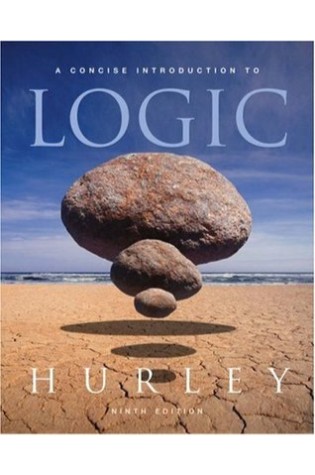
Lists It Appears On:
- Multipotents
Unsurpassed for its clarity, conciseness, and comprehensiveness, Hurley’s market-leading A CONCISE INTRODUCTION TO LOGIC has established itself as the standard for introductory logic classes. Hailed in the first eight editions for an unwavering commitment to lucid, focused, reader-friendly presentations of logic’s basic topics, the latest edition also continues to expand upon Hurley’s tradition of technological excellence with the introduction of vMentor and iLrn Logic. These two technologies help you manage the workload of teaching logic by providing your students with a live, online logic tutoring service and you with an online system that automates homework and test grading.
26 .) Crimes Against Logic: Exposing the Bogus Arguments of Politicians, Priests, Journalists, and Other Serial Offenders written by Jamie Whyte
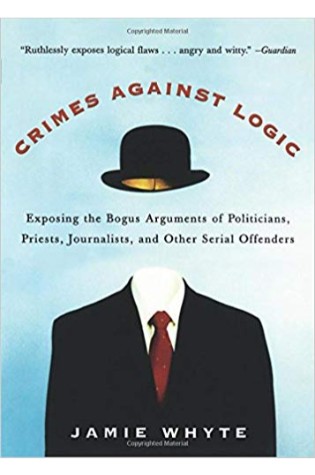
In Crimes Against Logic Whyte take us on a fast-paced, ruthlessly funny romp through the mulligan stew of can, folderol, and bogus logic served up in the media, at the office, and even in your own home. Applying his laserlike wit to dozens of timely examples, Whyte cuts through the haze of facts, figures, and double-talk and gets at the real truth behind what they’re telling us.
25 .) Critical Thinking Skills: Developing Effective Analysis and Argument written by Stella Cottrell
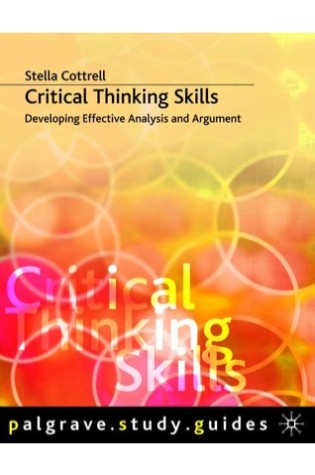
- Successtoro
- Why To Read
Critical Thinking Skills has taken the seemingly baffling art of analysis and broken it down into easy to understand blocks, with clear explanations, good examples, and plenty of activities to develop understanding at each stage. This easy to follow, step-by step guide to developing reasoning skills even applies the techniques to tasks such as reading, note-taking, and writing.
24 .) Critical Thinking: A Beginner’s Guide to Critical Thinking, Better Decision Making, and Problem Solving written by Jennifer Wilson
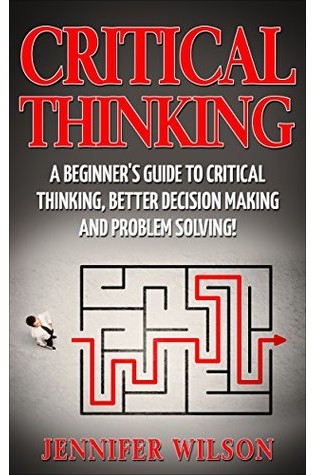
“Critical Thinking: A Beginner’s Guide To Critical Thinking, Better Decision Making and Problem Solving!” is a great introduction to the fundamental principles of critical thinking. It is a book that offers insightful tips, as well as steps that are easy to follow, in effectively solving problems. Amazingly, the tips provided are not geared towards solving only one type of problems. Instead, you can follow them to get solutions to a wide range of challenges. At the same time, the simple guidelines that the book outlines are not restricted for use by people of only one profession. On the contrary, they are applicable to all professions, and even other spheres of life. For example, businesspeople are bound to find the techniques of critical thinking described in the book very useful in solving business related problems, while politicians are likely to find the same techniques very handy. In actual fact, the lessons well taught in this book are useful to everyone who looks forward to seeking and finding solutions to simple as well as tough challenges. Once you have mastered the art of critical thinking and begun applying it, you will, very likely, marvel at how much of your precious resources you are capable of saving. You will also realize that you can streamline systems in a way that cuts down on wastage and inefficiencies. Besides these, kind of, formal advantages, you will love it when critical thinking begins to come to you as a matter of fact in your day-to-day life.
23 .) Gödel, Escher, Bach: An Eternal Golden Braid written by Douglas R. Hofstadter
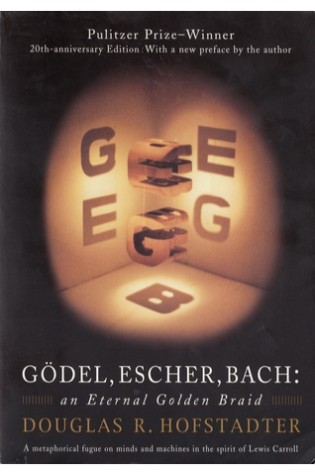
Douglas Hofstadter’s book is concerned directly with the nature of “maps” or links between formal systems. However, according to Hofstadter, the formal system that underlies all mental activity transcends the system that supports it. If life can grow out of the formal chemical substrate of the cell, if consciousness can emerge out of a formal system of firing neurons, then so too will computers attain human intelligence. Gödel, Escher, Bach is a wonderful exploration of fascinating ideas at the heart of cognitive science: meaning, reduction, recursion, and much more.
22 .) Gödel’s Proof written by Ernest Nagel and James R. Newman
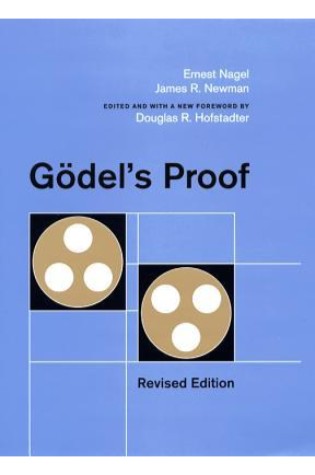
In 1931 Kurt Gödel published his fundamental paper, “On Formally Undecidable Propositions of Principia Mathematica and Related Systems.” This revolutionary paper challenged certain basic assumptions underlying much research in mathematics and logic. Gödel received public recognition of his work in 1951 when he was awarded the first Albert Einstein Award for achievement in the natural sciences–perhaps the highest award of its kind in the United States. The award committee described his work in mathematical logic as “one of the greatest contributions to the sciences in recent times.” However, few mathematicians of the time were equipped to understand the young scholar’s complex proof. Ernest Nagel and James Newman provide a readable and accessible explanation to both scholars and non-specialists of the main ideas and broad implications of Gödel’s discovery. It offers every educated person with a taste for logic and philosophy the chance to understand a previously difficult and inaccessible subject.
21 .) How Not to Be Wrong: The Power of Mathematical Thinking written by Jordan Ellenberg
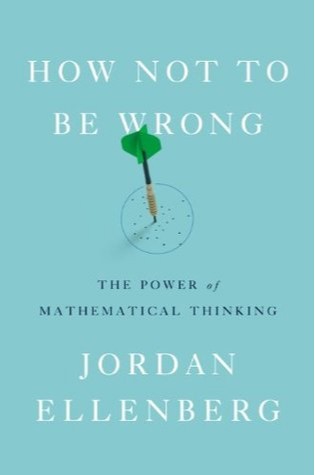
- Book Depository
The Freakonomics of math—a math-world superstar unveils the hidden beauty and logic of the world and puts its power in our hands The math we learn in school can seem like a dull set of rules, laid down by the ancients and not to be questioned. In How Not to Be Wrong, Jordan Ellenberg shows us how terribly limiting this view is: Math isn’t confined to abstract incidents that never occur in real life, but rather touches everything we do—the whole world is shot through with it. Math allows us to see the hidden structures underneath the messy and chaotic surface of our world. It’s a science of not being wrong, hammered out by centuries of hard work and argument. Armed with the tools of mathematics, we can see through to the true meaning of information we take for granted: How early should you get to the airport? What does “public opinion” really represent? Why do tall parents have shorter children? Who really won Florida in 2000? And how likely are you, really, to develop cancer? How Not to Be Wrong presents the surprising revelations behind all of these questions and many more, using the mathematician’s method of analyzing life and exposing the hard-won insights of the academic community to the layman—minus the jargon. Ellenberg chases mathematical threads through a vast range of time and space, from the everyday to the cosmic, encountering, among other things, baseball, Reaganomics, daring lottery schemes, Voltaire, the replicability crisis in psychology, Italian Renaissance painting, artificial languages, the development of non-Euclidean geometry, the coming obesity apocalypse, Antonin Scalia’s views on crime and punishment, the psychology of slime molds, what Facebook can and can’t figure out about you, and the existence of God.
20 .) How to Argue & Win Every Time: At Home, At Work, In Court, Everywhere, Everyday written by Gerry Spence
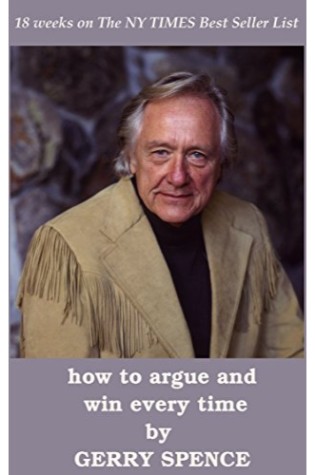
Gerry Spence says, “We were born to make the winning argument, just as we were born to walk.” In his bestselling book, the preeminent American trial lawyer and grandmaster of argument tells us how.
19 .) How to Prove It: A Structured Approach written by Daniel J. Velleman
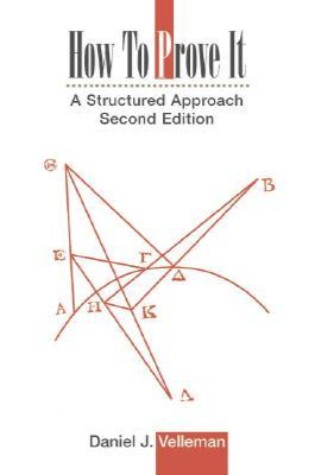
Geared to preparing students to make the transition from solving problems to proving theorems, this text teaches them the techniques needed to read and write proofs. The book begins with the basic concepts of logic and set theory, to familiarize students with the language of mathematics and how it is interpreted. These concepts are used as the basis for a step-by-step breakdown of the most important techniques used in constructing proofs. To help students construct their own proofs, this new edition contains over 200 new exercises, selected solutions, and an introduction to Proof Designer software.
18 .) How to Solve It: A New Aspect of Mathematical Method written by George Pólya
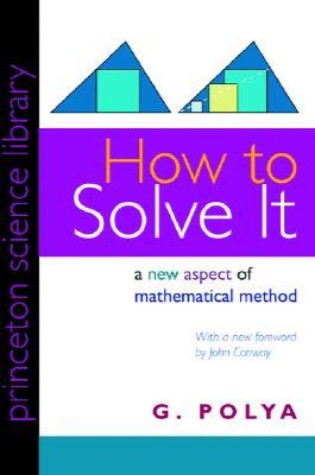
A perennial bestseller by eminent mathematician G. Polya, How to Solve It will show anyone in any field how to think straight. In lucid and appealing prose, Polya reveals how the mathematical method of demonstrating a proof or finding an unknown can be of help in attacking any problem that can be “reasoned” out–from building a bridge to winning a game of anagrams. Generations of readers have relished Polya’s deft–indeed, brilliant–instructions on stripping away irrelevancies and going straight to the heart of the problem.
17 .) Introducing Logic written by Dan Cryan
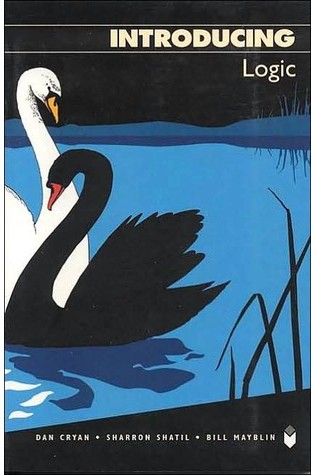
Introducing Logic makes this important discipline accessible to everyone using the series’ popular illustrated format. This easy-to-follow guide maps the historical development of logic, explains its symbols and methodology, traces its influence in a variety of disciplines and shows logic in action in our digital age.
16 .) Introduction to Logic written by Irving M. Copi, Carl Cohen, and Kenneth McMahon
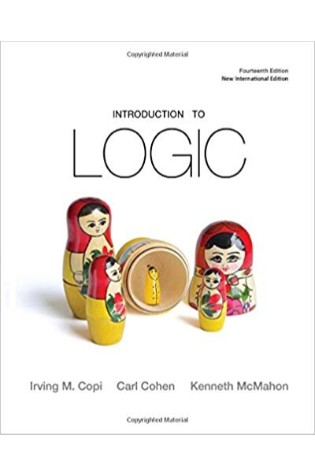
Introduction to Logic is a proven textbook that has been honed through the collaborative efforts of many scholars over the last five decades. Its scrupulous attention to detail and precision in exposition and explanation is matched by the greatest accuracy in all associated detail. In addition, it continues to capture student interest through its personalized human setting and current examples. The 14th Edition of Introduction to Logic, written by Copi, Cohen & McMahon, is dedicated to the many thousands of students and their teachers – at hundreds of universities in the United States and around the world – who have used its fundamental methods and techniques of correct reasoning in their everyday lives.
15 .) Language, Truth, and Logic written by A.J. Ayer
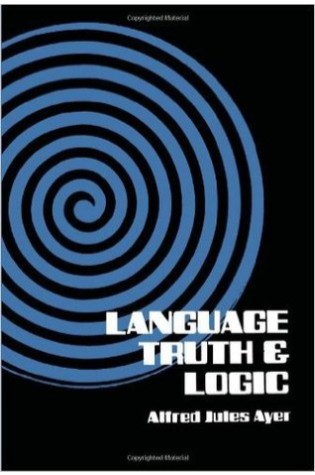
Classic introduction to objectives & methods of schools of empiricism & linguistic analysis, especially of the logical positivism derived from the Vienna Circle. Topics: elimination of metaphysics, function of philosophy, nature of philosophical analysis, the a priori, truth & probability, critique of ethics & theology, self & the common world etc. Introduction The elimination of metaphysics The function of philosophy The nature of philosophical analysis The a priori Truth & probability Critique of ethics & theology The self & the common world Solutions of outstanding philosophical disputes Index
14 .) Logically Fallacious: The Ultimate Collection of Over 300 Logical Fallacies written by Bo Bennett
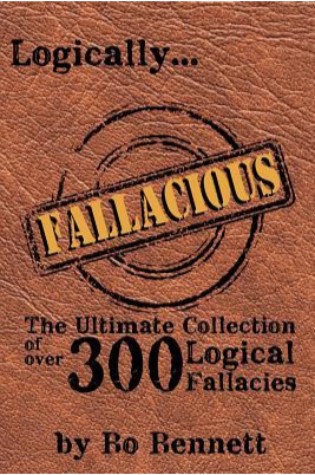
This book is a crash course in effective reasoning, meant to catapult you into a world where you start to see things how they really are, not how you think they are. The focus of this book is on logical fallacies, which loosely defined, are simply errors in reasoning. With the reading of each page, you can make significant improvements in the way you reason and make decisions.
13 .) Naming and Necessity written by Saul A. Kripke
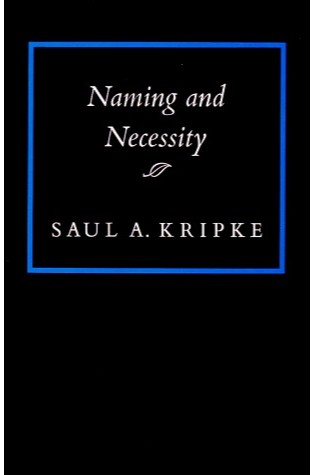
If there is such a thing as essential reading in metaphysics or in philosophy of language, this is it. Ever since the publication of its original version, “Naming and Necessity” has had great and increasing influence. It redirected philosophical attention to neglected questions of natural and metaphysical necessity and to the connections between these and theories of reference, in particular of naming, and of identity. From a critique of the dominant tendency to assimilate names to descriptions and more generally to treat their reference as a function of their Fregean sense, surprisingly deep and widespread consequences may be drawn. The largely discredited distinction between accidental and essential properties, both of individual things (including people) and of kinds of things, is revived. So is a consequent view of science as what seeks out the essences of natural kinds. Traditional objections to such views are dealt with by sharpening distinctions between epistemic and metaphysical necessity; in particular by the startling admission of necessary a posteriori truths. From these, in particular from identity statements using rigid designators whether of things or of kinds, further remarkable consequences are drawn for the natures of things, of people, and of kinds; strong objections follow, for example to identity versions of materialism as a theory of the mind.
12 .) Nonsense: Red Herrings, Straw Men and Sacred Cows: How We Abuse Logic in Our Everyday Language written by Robert J. Gula
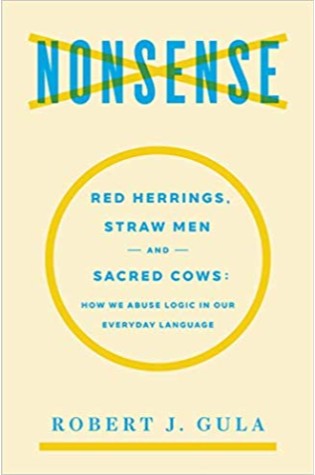
Nonsense is the best compilation and study of verbal logical fallacies available anywhere. It is a handbook of the myriad ways we go about being illogical―how we deceive others and ourselves, how we think and argue in ways that are disorderly, disorganized, or irrelevant. Nonsense is also a short course in nonmathematical logical thinking, especially important for students of philosophy and economics. A book of remarkable scholarship, Nonsense is unexpectedly relaxed, informal, and accessible.

11 .) Predictably Irrational, Revised and Expanded Edition: The Hidden Forces That Shape Our Decisions written by Dr. Dan Ariely
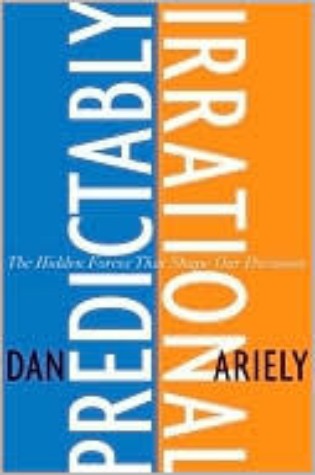
Why do our headaches persist after taking a one-cent aspirin but disappear when we take a 50-cent aspirin? Why does recalling the Ten Commandments reduce our tendency to lie, even when we couldn’t possibly be caught? Why do we splurge on a lavish meal but cut coupons to save twenty-five cents on a can of soup? Why do we go back for second helpings at the unlimited buffet, even when our stomachs are already full? And how did we ever start spending $4.15 on a cup of coffee when, just a few years ago, we used to pay less than a dollar? When it comes to making decisions in our lives, we think we’re in control. We think we’re making smart, rational choices. But are we? In a series of illuminating, often surprising experiments, MIT behavioral economist Dan Ariely refutes the common assumption that we behave in fundamentally rational ways. Blending everyday experience with groundbreaking research, Ariely explains how expectations, emotions, social norms, and other invisible, seemingly illogical forces skew our reasoning abilities. Not only do we make astonishingly simple mistakes every day, but we make the same “types” of mistakes, Ariely discovers. We consistently overpay, underestimate, and procrastinate. We fail to understand the profound effects of our emotions on what we want, and we overvalue what we already own. Yet these misguided behaviors are neither random nor senseless. They’re systematic and predictable–making us “predictably” irrational. From drinking coffee to losing weight, from buying a car to choosing a romantic partner, Ariely explains how to break through these systematic patterns of thought to make better decisions.
10 .) The Logic of Scientific Discovery written by Karl Popper
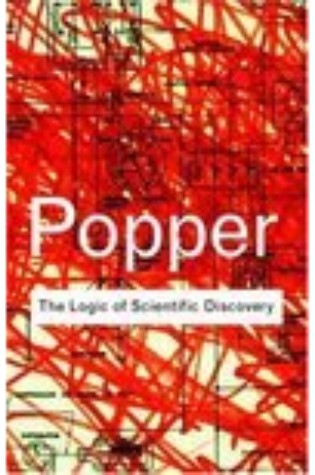
When first published in 1959, this book revolutionized contemporary thinking about science and knowledge. It remains the one of the most widely read books about science to come out of the twentieth century.
9 .) Think Smarter: Critical Thinking to Improve Problem-Solving and Decision-Making Skills written by Michael Kallet
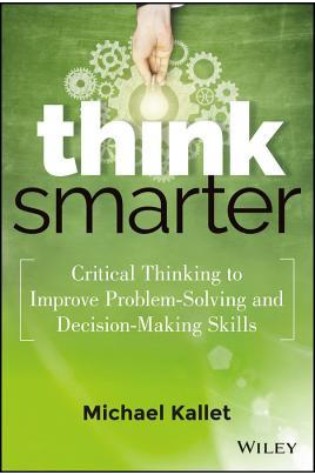
Train your brain for better decisions, problem solving, and innovation”Think Smarter: Critical Thinking to Improve Problem-Solving and Decision-Making Skills” is the comprehensive guide to training your brain to do more for you. Written by a critical thinking trainer and coach, the book presents a pragmatic set of tools to apply critical thinking techniques to everyday business issues. “Think Smarter” is filled with real world examples that demonstrate how the tools work in action, in addition to dozens of practice exercises applicable across industries and functions, “Think Smarter” is a versatile resource for individuals, managers, students, and corporate training programs. Thinking is the foundation of everything you do, but we rely largely on automatic thinking to process information, often resulting in misunderstandings and errors. Shifting over to critical thinking means thinking purposefully using a framework and toolset, enabling thought processes that lead to better decisions, faster problem solving, and creative innovation. “Think Smarter” provides clear, actionable steps toward improving your critical thinking skills, plus exercises that clarify complex concepts by putting theory into practice. Features include: A comprehensive critical thinking frameworkOver twenty-five “tools” to help you think more criticallyCritical thinking implementation for functions and activitiesExamples of the real-world use of each tool Learn what questions to ask, how to uncover the real problem to solve, and mistakes to avoid. Recognize assumptions your can rely on versus those without merit, and train your brain to tick through your mental toolbox to arrive at more innovative solutions. Critical thinking is the top skill on the wish list in the business world, and sharpening your ability can have profound affects throughout all facets of life.
8 .) Thinking, Fast and Slow written by Daniel Kahneman
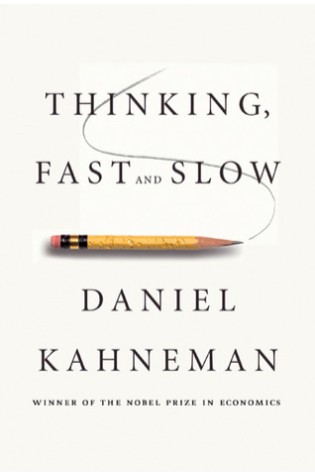
In the highly anticipated Thinking, Fast and Slow, Kahneman takes us on a groundbreaking tour of the mind and explains the two systems that drive the way we think. System 1 is fast, intuitive, and emotional; System 2 is slower, more deliberative, and more logical. Kahneman exposes the extraordinary capabilities—and also the faults and biases—of fast thinking, and reveals the pervasive influence of intuitive impressions on our thoughts and behavior. The impact of loss aversion and overconfidence on corporate strategies, the difficulties of predicting what will make us happy in the future, the challenges of properly framing risks at work and at home, the profound effect of cognitive biases on everything from playing the stock market to planning the next vacation—each of these can be understood only by knowing how the two systems work together to shape our judgments and decisions. Engaging the reader in a lively conversation about how we think, Kahneman reveals where we can and cannot trust our intuitions and how we can tap into the benefits of slow thinking. He offers practical and enlightening insights into how choices are made in both our business and our personal lives—and how we can use different techniques to guard against the mental glitches that often get us into trouble. Thinking, Fast and Slow will transform the way you think about thinking.
7 .) To Mock a Mockingbird and Other Logic Puzzles written by Raymond M. Smullyan
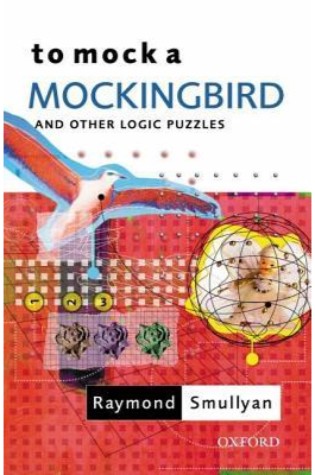
This is a challenging puzzle book covering logic, philosophy, psychology, artificial intelligence, computer science and mathematics. It contains many puzzles and their solutions and aims to attract many readers in an age where computer science, logic, and mathematics are becoming increasingly important and popular.
6 .) How to Win Every Argument: The Use and Abuse of Logic written by Madsen Pirie
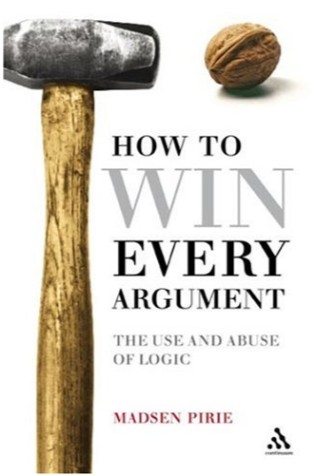
- Critical Thinker Academy
This is the book your friends will wish you hadn’t read, a witty and infectious guide to arguing successfully. Each entry deals with one fallacy, explaining what the fallacy is, giving and analysing an example, outlining when/where/why the particular fallacy tends to occur and finally showing how you can perpetrate the fallacy on other people in order to win an argument. Originally published to great acclaim in 1985 as “The Book of Fallacy”, this is a classic brought up-to-date for a whole new generation.
5 .) Logic: A Very Short Introduction written by Graham Priest
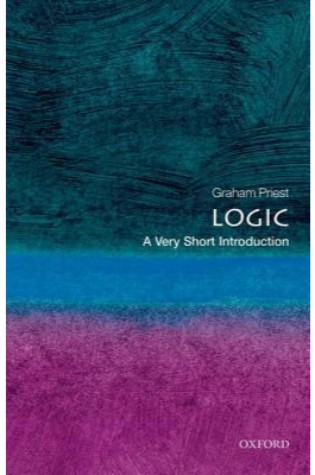
Logic is often perceived as having little to do with the rest of philosophy, and even less to do with real life. In this lively and accessible introduction, Graham Priest shows how wrong this conception is. He explores the philosophical roots of the subject, explaining how modern formal logic deals with issues ranging from the existence of God and the reality of time to paradoxes of probability and decision theory. Along the way, the basics of formal logic are explained in simple, non-technical terms, showing that logic is a powerful and exciting part of modern philosophy. About the Series: Combining authority with wit, accessibility, and style, Very Short Introductions offer an introduction to some of life’s most interesting topics. Written by experts for the newcomer, they demonstrate the finest contemporary thinking about the central problems and issues in hundreds of key topics, from philosophy to Freud, quantum theory to Islam.
4 .) An Illustrated Book of Bad Arguments written by Ali Almossawi
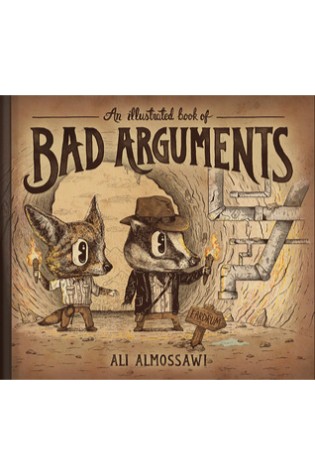
This book is aimed at newcomers to the field of logical reasoning, particularly those who, to borrow a phrase from Pascal, are so made that they understand best through visuals. I have selected a small set of common errors in reasoning and visualized them using memorable illustrations that are supplemented with lots of examples. The hope is that the reader will learn from these pages some of the most common pitfalls in arguments and be able to identify and avoid them in practice.
3 .) Being Logical: A Guide to Good Thinking written by Dennis Q. McInerny
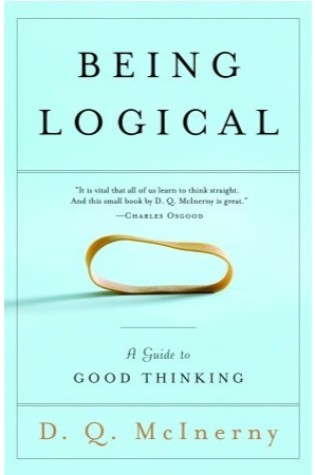
Whether regarded as a science, an art, or a skill–and it can properly be regarded as all three–logic is the basis of our ability to think, analyze, argue, and communicate. Indeed, logic goes to the very core of what we mean by human intelligence. In this concise, crisply readable book, distinguished professor D. Q. McInerny offers an indispensable guide to using logic to advantage in everyday life. Written explicitly for the layperson, McInerny’s Being Logical promises to take its place beside Strunk and White’s The Elements of Style as a classic of lucid, invaluable advice. As McInerny notes, logic is a deep, wide, and wonderfully varied field, with a bearing on every aspect of our intellectual life. A mastery of logic begins with an understanding of right reasoning–and encompasses a grasp of the close kinship between logical thought and logical expression, a knowledge of the basic terms of argument, and a familiarity with the pitfalls of illogical thinking. Accordingly, McInerny structures his book in a series of brief, penetrating chapters that build on one another to form a unified and coherent introduction to clear and effective reasoning. At the heart of the book is a brilliant consideration of argument–how an argument is founded and elaborated, how it differs from other forms of intellectual discourse, and how it critically embodies the elements of logic. McInerny teases out the subtleties and complexities of premises and conclusions, differentiates statements of fact from statements of value, and discusses the principles and uses of every major type of argument, from the syllogistic to the conditional. In addition, he provides an incisive look at illogical thinking and explains how to recognize and avoid the most common errors of logic.
2 .) Tractatus Logico-Philosophicus written by Ludwig Wittgenstein
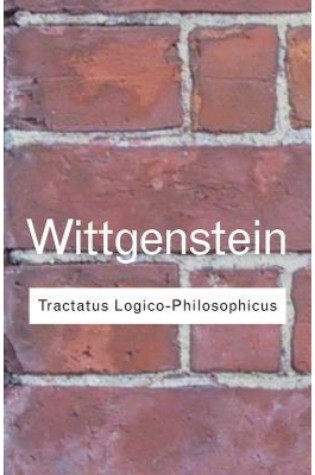
Perhaps the most important work of philosophy written in the twentieth century, Tractatus Logico-Philosophicus was the only philosophical work that Ludwig Wittgenstein published during his lifetime. Written in short, carefully numbered paragraphs of extreme brilliance, it captured the imagination of a generation of philosophers. For Wittgenstein, logic was something we use to conquer a reality which is in itself both elusive and unobtainable. He famously summarized the book in the following words: ‘What can be said at all can be said clearly; and what we cannot talk about we must pass over in silence.’ David Pears and Brian McGuinness received the highest praise for their meticulous translation.
1 .) A Rulebook for Arguments written by Anthony Weston
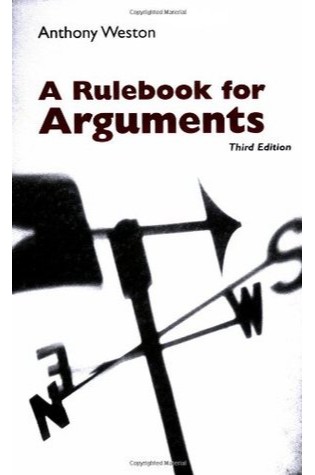
Updated examples, streamlined text, and the chapter on definition reworked in a rule-based format strengthen this already strong volume. Readers familiar with the previous edition will find a text that retains all the features that make Rulebook ideally suited for use as a supplementary course book — including its modest price and compact size. Unlike most textbooks on argumentative writing, Rulebook is organised around specific rules, illustrated and explained soundly and briefly. It is not a textbook, but a rulebook, whose goal is to help students get on with writing a paper or assessing an argument.
The 50+ Additional Best Logic Books
9 best logic book sources/lists, related posts.
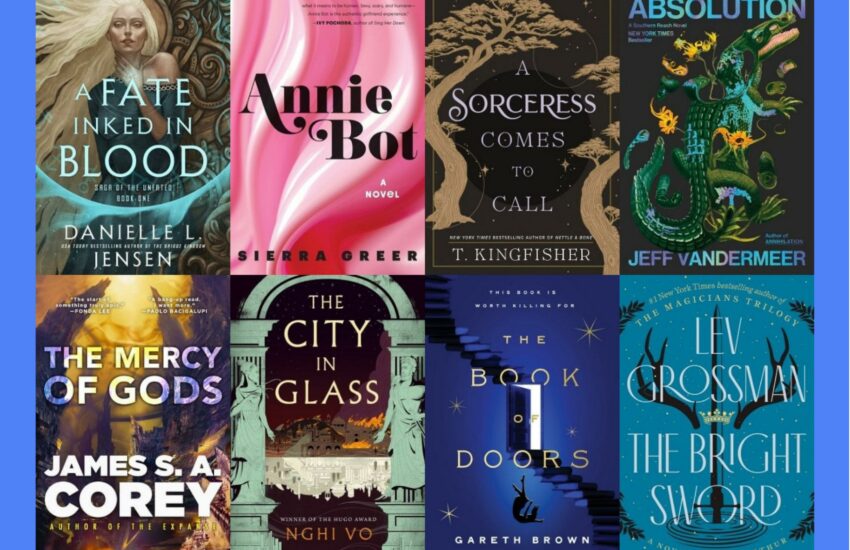
The Best Books of 2024 – Science Fiction And Fantasy (A Year-End List Aggregation)
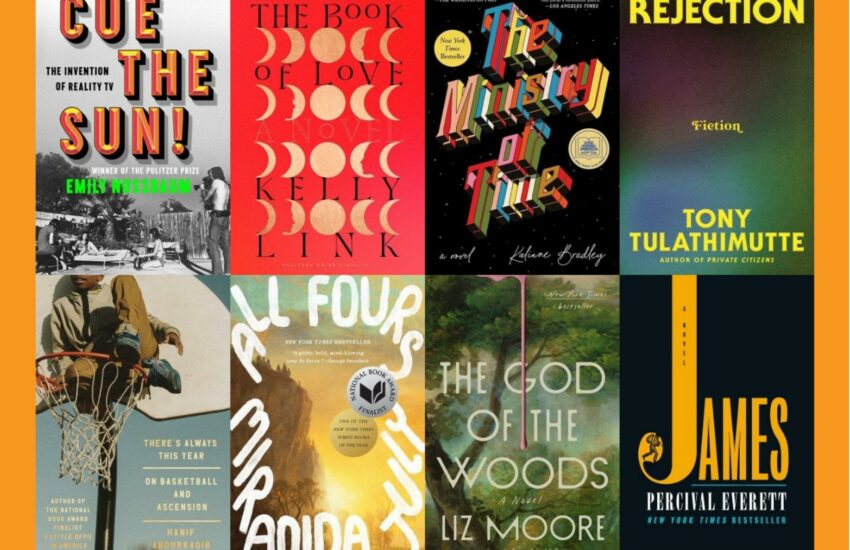
The Best Books of 2024 – All Genres (A Year-End List Aggregation)

- Discussions
- Reading Challenge
- Kindle Notes & Highlights
- Favorite genres
- Friends’ recommendations
- Account settings
Logic Critical Thinking Books

Welcome back. Just a moment while we sign you in to your Goodreads account.
Best Books on Critical Thinking
Dive into the realm of logic and reason with this collection – the most recommended books on critical thinking, curated based on frequent recommendations from leading book blogs and publications..

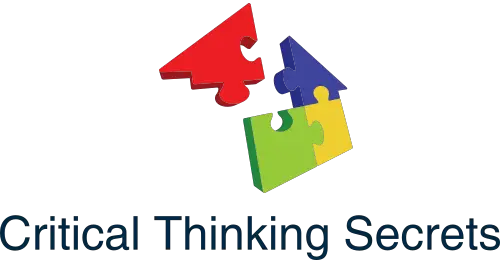
- Search Search Search …
- Search Search …
What are the Top 20 Best Critical Thinking Books?

There are many great books on critical thinking, including but not limited to Thinknetic’s “The Habit of Critical Thinking,” Rebecca Stobaugh’s “50 Strategies to Boost Cognitive Engagement,” and Jonathan Haber’s “Critical Thinking: Part of the MIT Press Essential Knowledge.”
With all the books on critical thinking available, how do you best determine which you should read? The rest of this article will break down the top 20 books on critical thinking followed by the Amazon link and a short description of each.
What is Critical Thinking?
Critical thinking is the ability to objectively analyze and evaluate an issue in order to form judgment, which is vital in today’s world. While critical thinking begins in early childhood and is taught at the primary and secondary education levels, it is always best to keep your critical thinking skills sharp.
Why is Critical Thinking Important?
Communication is key to healthy relationships and communities. Critical thinking enables individuals to express their thoughts, ideas, and beliefs in constructive ways. In relationships, critical thinking is vital to avoid frustration and miscommunication.
Critical thinking fosters creativity and out of the box thinking, which can be applied to any area of life. People are usually introduced to critical thinking in early childhood when, as infants and toddlers, we explore our world and its limits. Our first problem solving skills come in our earliest years.
However, critical thinking doesn’t always come so naturally. Fortunately, there are countless resources to improving our critical thinking skills – including the following books mentioned in this article.
The Top 20 Books on Critical Thinking
The following books can all be found on Amazon.com, and a link is provided for each.
1.) Critical Thinking ; Logic Mastery (Series by Thinknetic)
The first entry on our list is actually a series of 5 books by Thinknetic.net . Each of the five books contain essential critical thinking skills and teach the reader how to change their way of thinking and apply critical thinking to every aspect of their lives. The five books in the series are as follows:
- Critical Thinking in a Nutshell
- The Critical Thinking Effect
- Conquer Logical Fallacies
- The Habit of Critical Thinking
- The Socratic Way of Questioning
Most of these books are available on Kindle Unlimited. You can purchase them individually or as a set.
Amazon Link: https://amzn.to/360UA40
2.) Critical Thinking and the Analytical Mind by Marcus P. Dawson

Amazon Link: https://amzn.to/3LUuqyS
This book teaches the reader the art of making decisions and solving problems while thinking clearly and avoiding cognitive biases and fallacies in systems .
3.) Critical Thinking: The 12 Rules for Intelligent Thinking by Jason Dyer

Amazon Link: https://amzn.to/3jDVk2h
The description of this book includes skills to improve your problem solving and decision-making skills. It also contains valuable information on how to overcome shyness and social anxiety – conditions that hinder many people in both personal and professional capacities – and increase self-confidence.
4.) 50 Strategies to Boost Cognitive Engagement by Rebecca Stobaugh

Amazon Link: https://amzn.to/3OaDYbl
This valuable book for teachers of any grade level – from elementary to college – helps build a culture of thinking that transforms any classroom into an environment of active learning and student engagement.
5.) Critical Thinking: The MIT Press Essential Knowledge Series by Jonathan Haber

Amazon Link: https://amzn.to/3ji6329
In this essential book, Jonathan Haber explains critical thinking, how the term first emerged in society, its definition, and how to teach and assess critical thinking skills .
6.) The Critical Thinking Toolkit by Galen A. Foresman, Peter S. Fosl, and Jamie C. Watson

Amazon Link: https://amzn.to/3vcISMi
This comprehensive book takes a wide view with critical thinking perspectives in psychology, sociology, philosophy, and political science. It applies critical thinking to subjects such as race and gender, symbols in rhetoric, and cognitive biases.
7.) Critical Thinking: A Beginner’s Guide to Developing Reasoning Skills by Morris Cullen

Amazon Link: https://amzn.to/3DX6t7w
A great resource for those still unfamiliar with the concept of critical thinking, this book will help the reader conquer feeble thought patterns and utilize reason.
8.) Critical Thinking Beginner’s Guide: Learn How Reasoning by Logic Improves Effective Problem Solving by Carl Patterson

Amazon Link: https://amzn.to/3rAJevd
This book contains the tools to think smarter and level up intuition to reach your potential and grow your mindfulness.
9.) Thinking Guide for Busy People by Harvey Smart

Amazon Link: https://amzn.to/3JsjzdU
This book helps the reader avoid the most common but subtle decision-making mistakes and make better decisions.
10.) Thinking, Fast and Slow by Daniel Kahneman

This New York Times Bestseller won the Nobel Prize in Economics.
Amazon Link: https://amzn.to/3Ob1RQ3
11.) Overthinking is NOT the Solution by Robert J. Charles
This book lists 25 ways to reduce stress, eliminate negative thinking, develop mental clarity and master your emotions.

Amazon Link: https://amzn.to/3LOsKHm
12.) Communication Skills Training by Ian Tuhovsky

This practical guide outlines how to improve social intelligence, presentation, persuasion, and public speaking. An Amazon bestseller.
Amazon Link: https://amzn.to/3LQu64d
13.) Self-Discipline: How to Build Mental Toughness and Focus to Achieve your Goals by John Winters

Amazon Link: https://amzn.to/3NSLIhX
A great book for those who don’t feel in control of their lives and want to change their path.
14.) Critical Thinking Mastery by Carl Patterson

Amazon Link: https://amzn.to/3xnnBlo
A beginner’s guide to increase intuition, improve communication, and solve problems.
15.) Master Your Emotions by Thibaut Meurisse
This book is described as a practical guide to overcoming negativity and better managing your emotions.

Amazon Link: https://amzn.to/3DX424Q
16.) Rethinking How We Think by Charles M. Johnston, MD

Amazon Link: https://amzn.to/3LQvfZz
This book details the integrative meta-perspective and the cognitive growing up on which our future depends.
17.) Critical Thinking by Brooke Noel Moore and Richard Parker

Amazon Link: https://amzn.to/36ZTy8Y
This textbook helps build the ability to discern between subjective opinions and judgments and objective facts in the era of “fake news.”
18.) Critical Thinking in Psychology, edited by Robert J. Sternberg

Amazon Link : https://amzn.to/3upkK9R
This textbook is a guide for psychology students to think critically about key topics such as experimental research, statistical analysis, and ethical judgments.
19.) Thinking in Systems and Mental Models by Marcus P. Dawson

Amazon Link: https://amzn.to/3Kv2JMQ
A guide for decision making and problem solving, this book introduces chaos theory and the science of thinking for social change.
20.) Critical Thinking by Tom Chatfield

Amazon Link: https://amzn.to/3v4GIOr
This valuable resource serves as a guide for effective argument, successful analysis, and independent study.
You may also like

How Do Emotions Positively Influence Critical Thinking: Uncovering the Benefits
Emotions are typically viewed as obstacles to rational thought, but recent studies indicate that they can actually play a positive role in […]

Critical Thinking in Leadership
Every business leader has learned from past economic crisis. The previous global financial crisis has taught us a powerful lesson about poor […]

Best Decision Making Books: Top Picks for Strategic Minds
In today’s fast-paced world, making informed and effective decisions is a skill that can have a profound impact on both personal and […]

Debate & Critical Thinking
We’ve all had debates with friends or on social media, where we get into it over some heated issue. Emotions get out […]

IMAGES
COMMENTS
Jun 20, 2017 · This is an introductory textbook in logic and critical thinking. The goal of the textbook is to provide the reader with a set of tools and skills that will enable them to identify and evaluate arguments. The book is intended for an introductory course that covers both formal and informal logic.
Feb 12, 2023 · In this blog post, we’ll introduce you to 17 of the best books on logic and critical thinking that will help you develop your reasoning skills, think more deeply, and approach problems with clarity and precision.
Jan 12, 2024 · To make your journey a little easier, we’ve gathered the best critical thinking books so you can learn from the masters. Get inspired to become a critical thinker in no time! The best books on critical thinking: 1. Critical Thinking: A Beginner’s Guide to Critical Thinking, Better Decision Making, and Problem Solving – Jennifer Wilson.
Mar 4, 2019 · A mastery of logic begins with an understanding of right reasoning–and encompasses a grasp of the close kinship between logical thought and logical expression, a knowledge of the basic terms of argument, and a familiarity with the pitfalls of illogical thinking.
Books shelved as logic-critical-thinking: Thinking From A To Z by Nigel Warburton, How Not to Be Wrong: The Power of Mathematical Thinking by Jordan Elle...
May 10, 2005 · Sharpen your reasoning skills with the elite selection of books on logic, repeatedly featured for their exceptional ability to teach critical thinking and rational analysis.
Jan 1, 2012 · Designed for students with no prior training in logic, INTRODUCTION TO LOGIC AND CRITICAL THINKING offers an accessible treatment of logic that enhances understanding of reasoning in everyday life. The text begins with an introduction to arguments.
The 4 Pillars of Critical Thinking: 103 Techniques & Hacks to Improve Your Work and Personal Life by Mastering Mental Skills. Analyze Situations Better and Reason Well by Detecting Logical Fallacies. Great On Kindle: A high quality digital reading experience. Only 16 left in stock (more on the way). Perfectly Logical!:
Oct 25, 2011 · Dive into the realm of logic and reason with this collection – the most recommended books on critical thinking, curated based on frequent recommendations from leading book blogs and publications. Recommendations from 23 articles, Barack Obama, Bill Gates, Seth MacFarlane and 96 others.
There are many great books on critical thinking, including but not limited to Thinknetic’s “The Habit of Critical Thinking,” Rebecca Stobaugh’s “50 Strategies to Boost Cognitive Engagement,” and Jonathan Haber’s “Critical Thinking: Part of the MIT Press Essential Knowledge.”